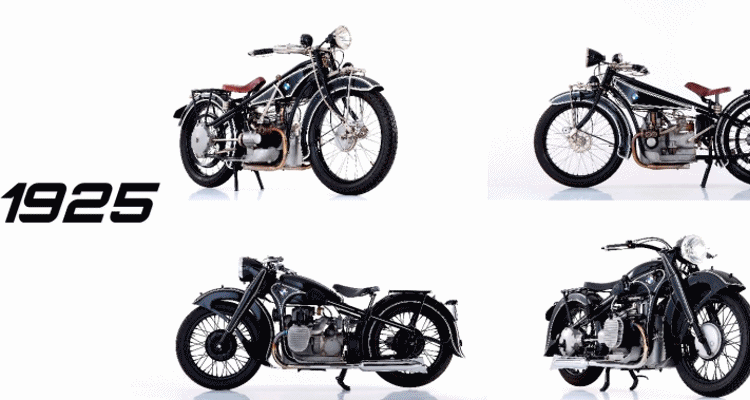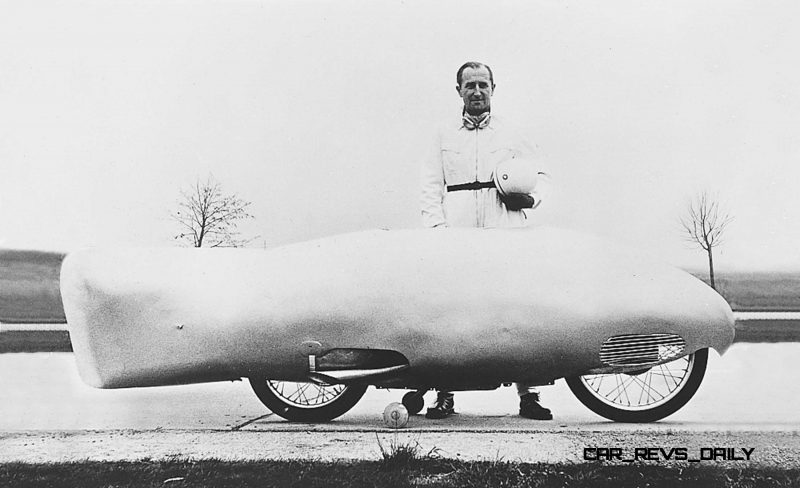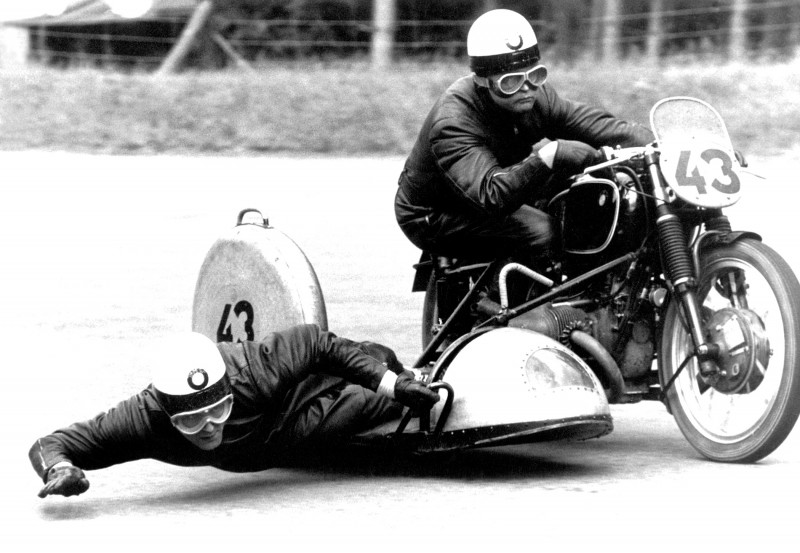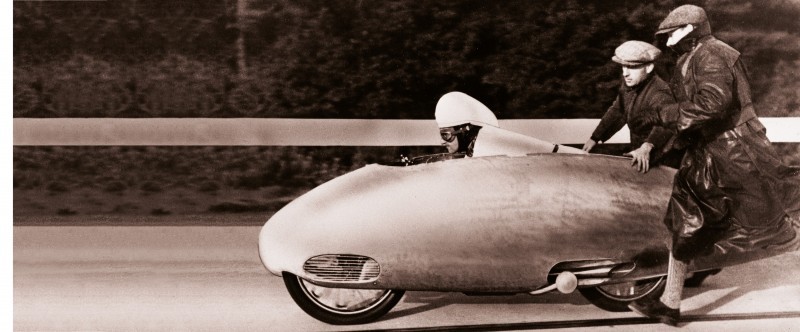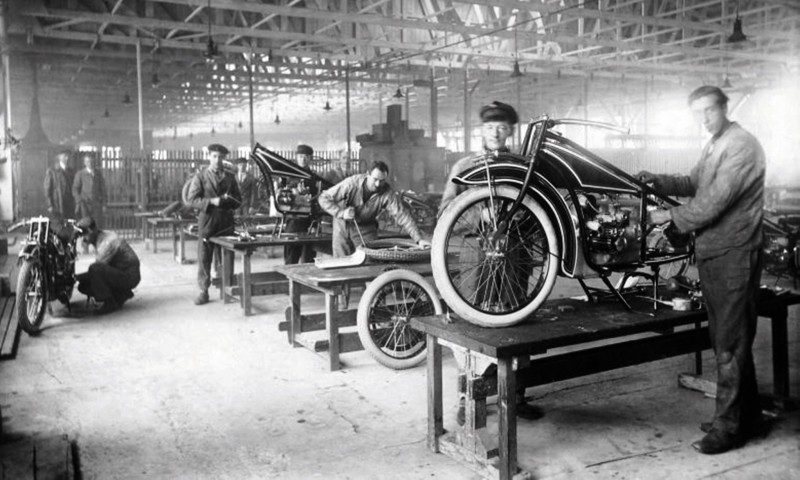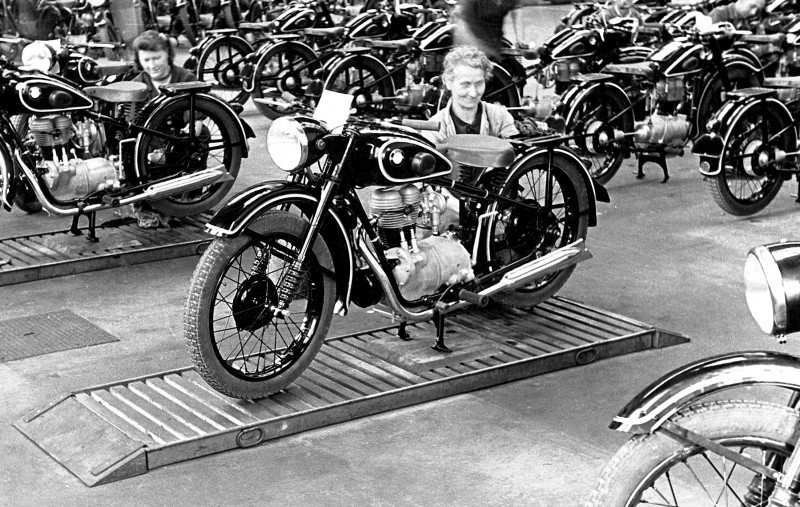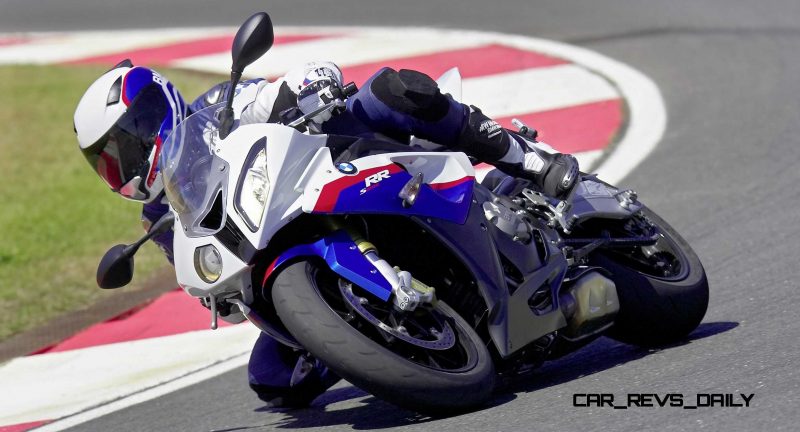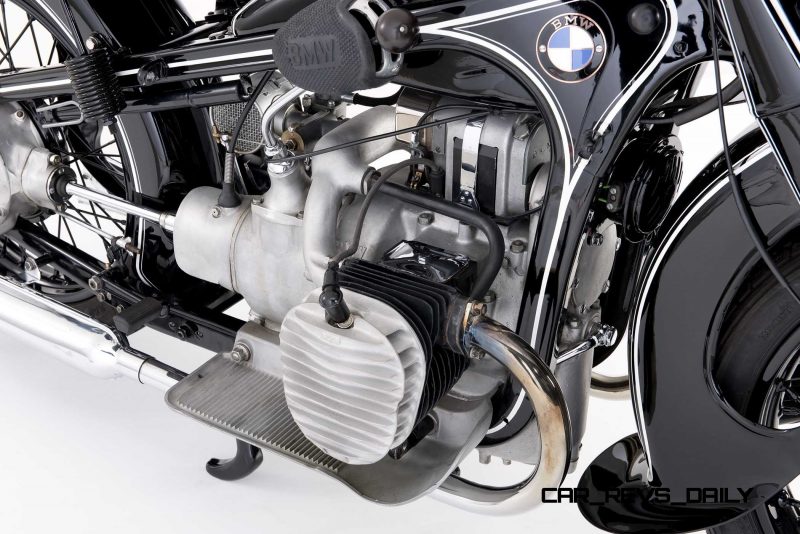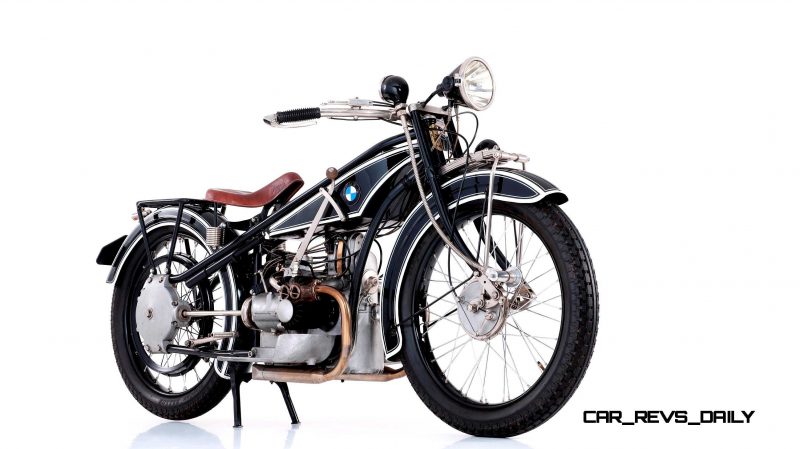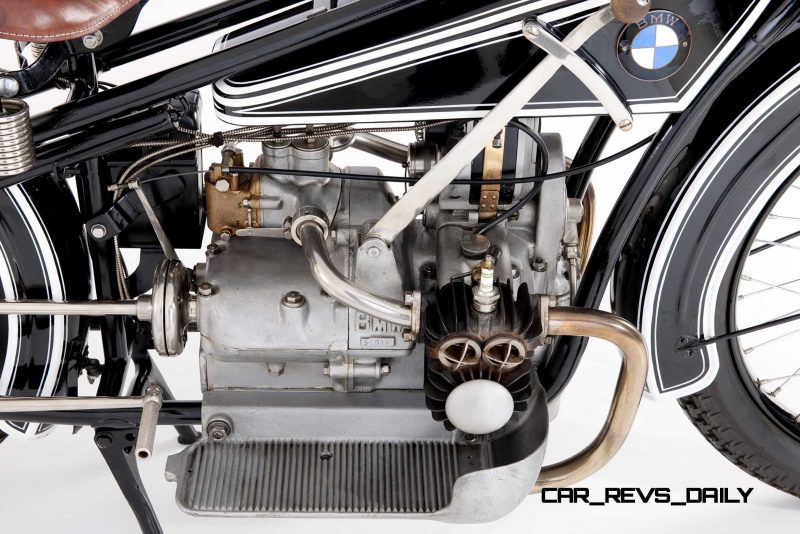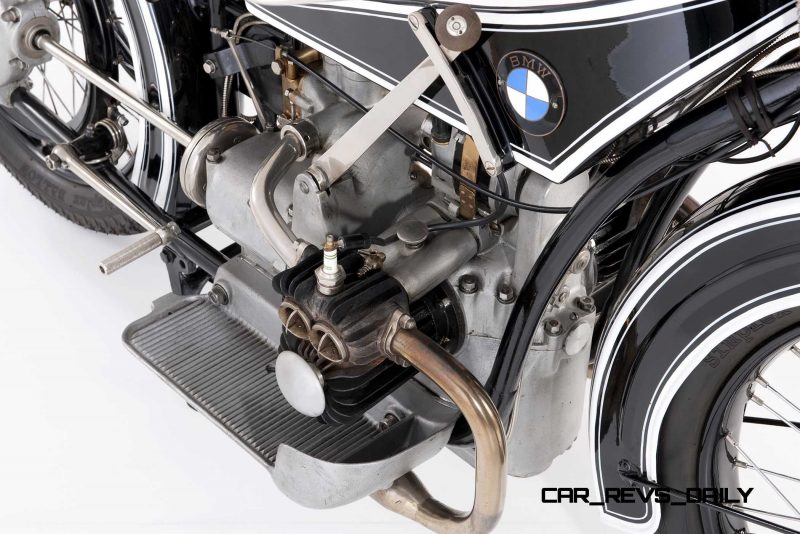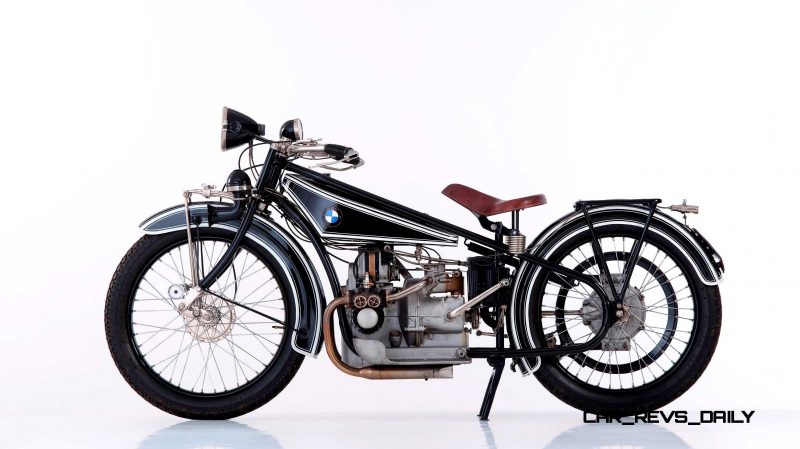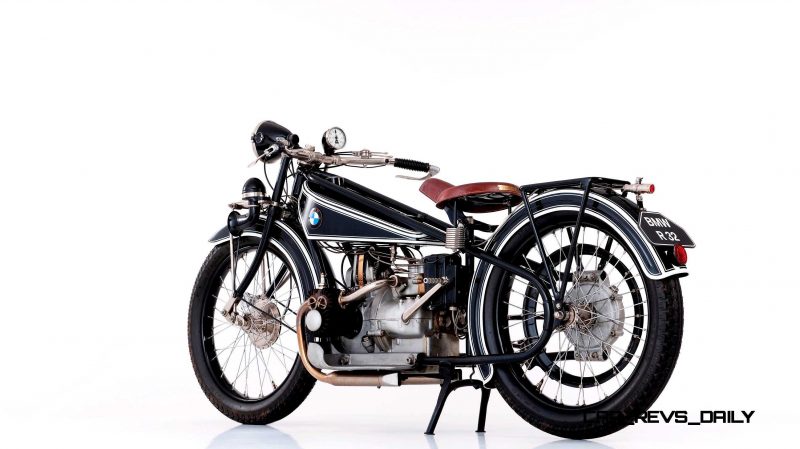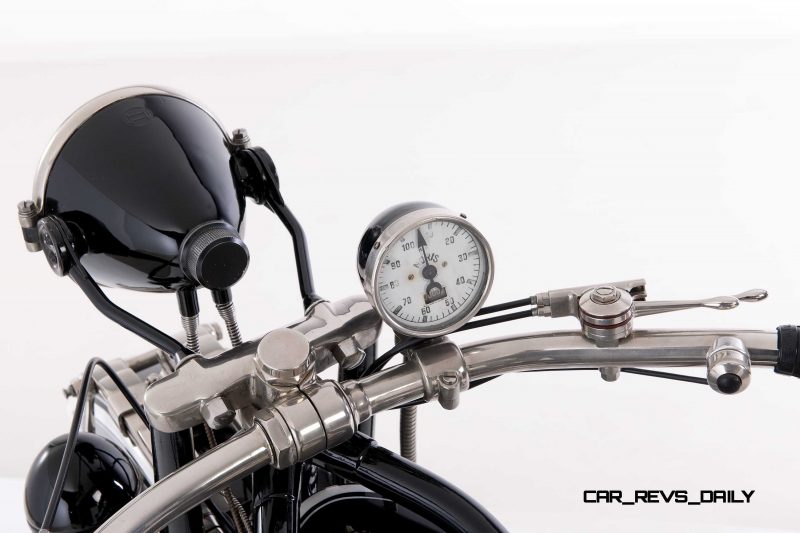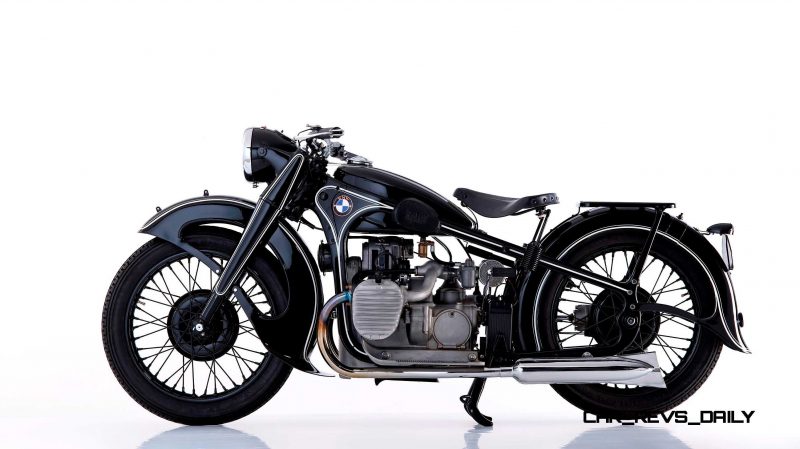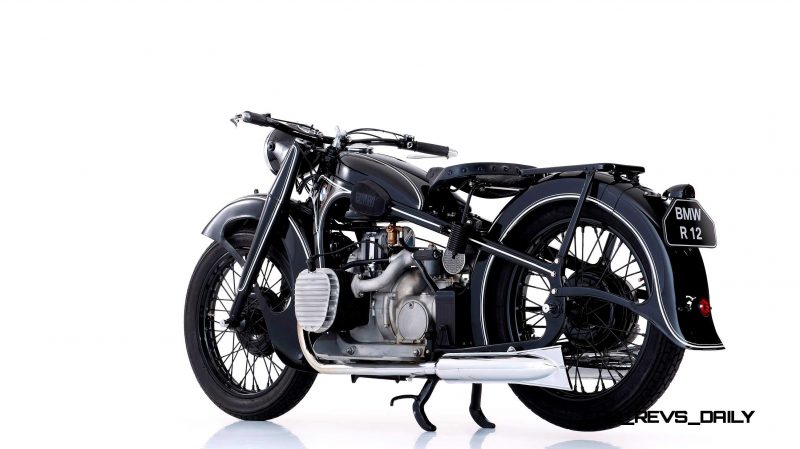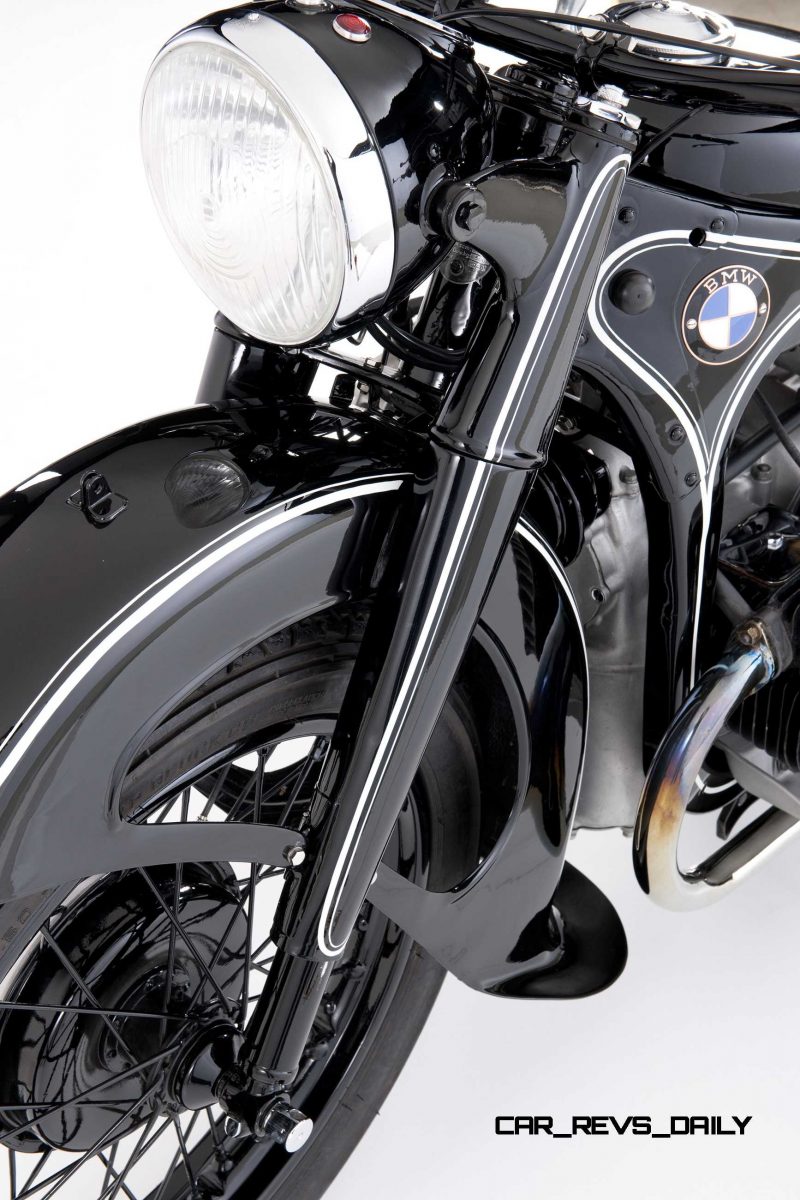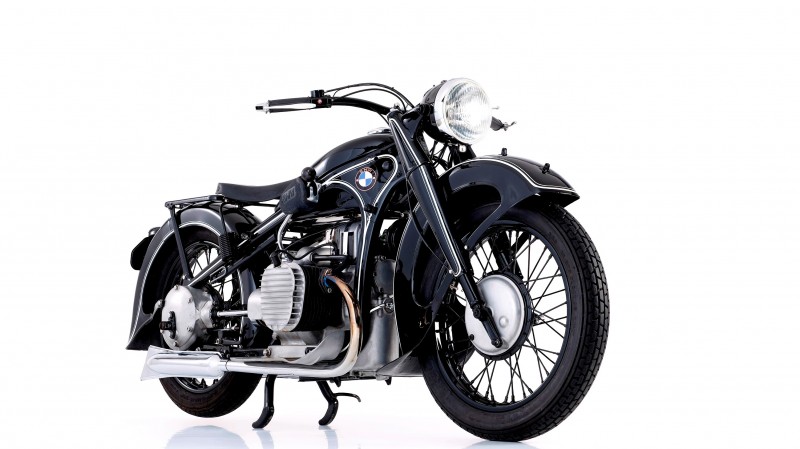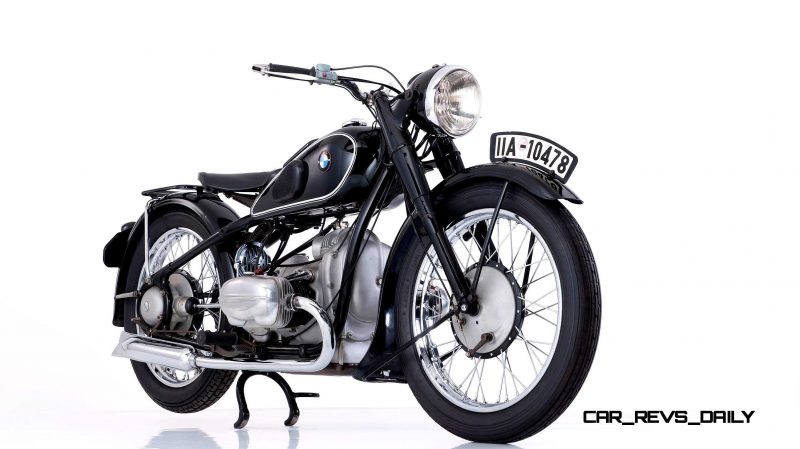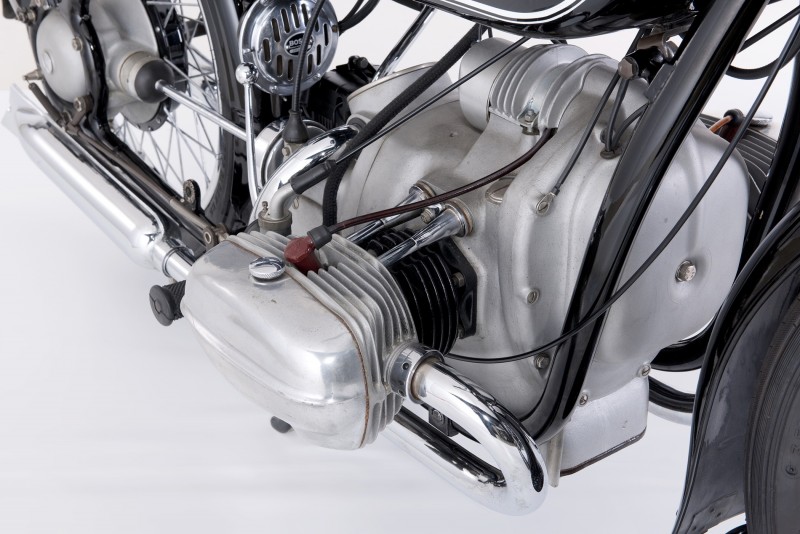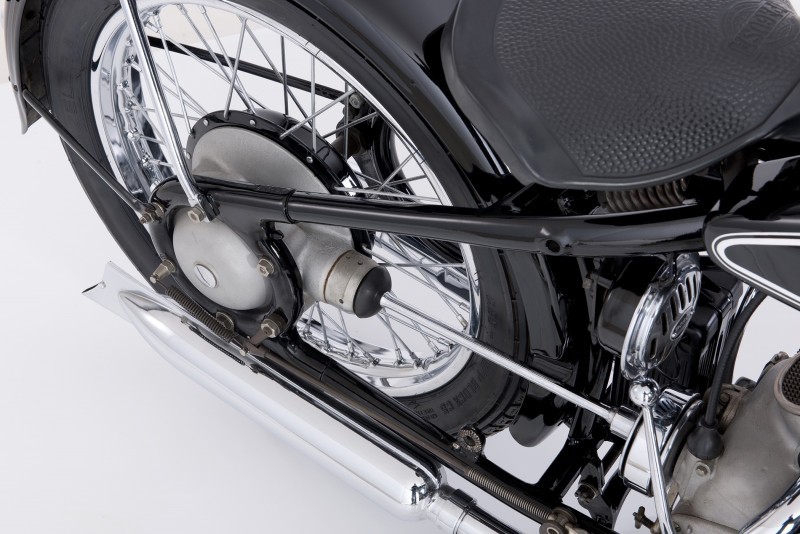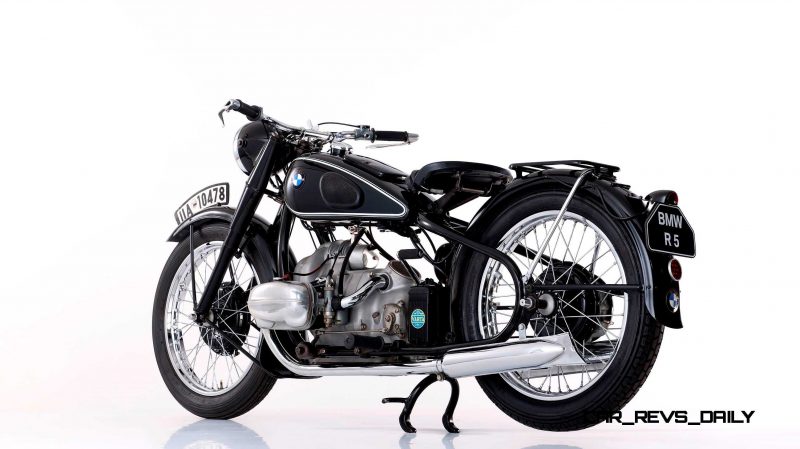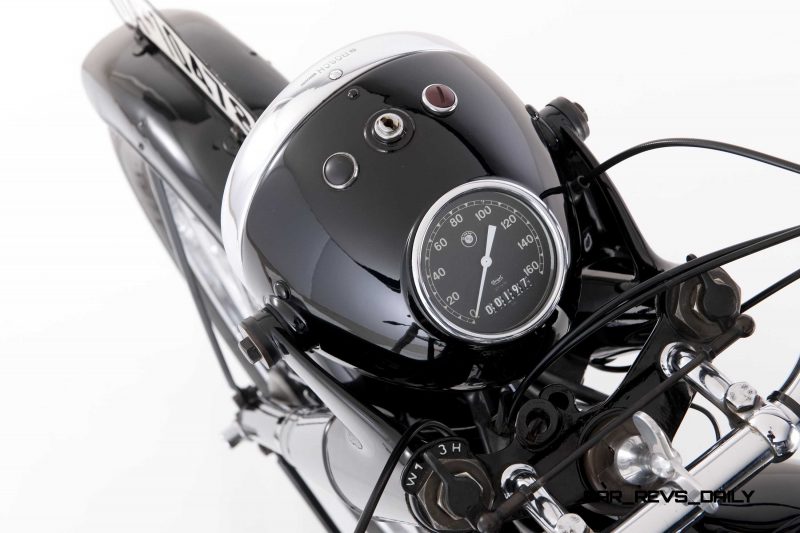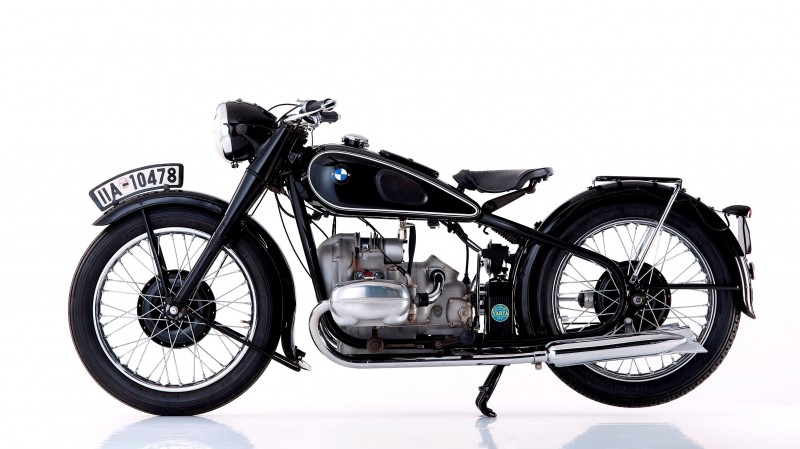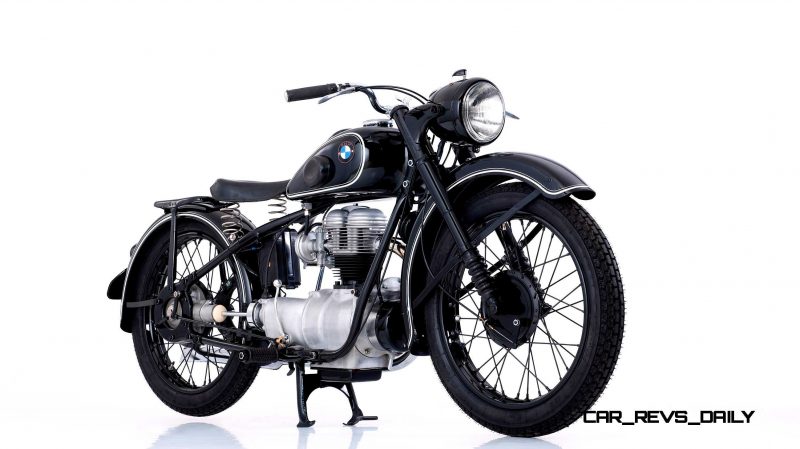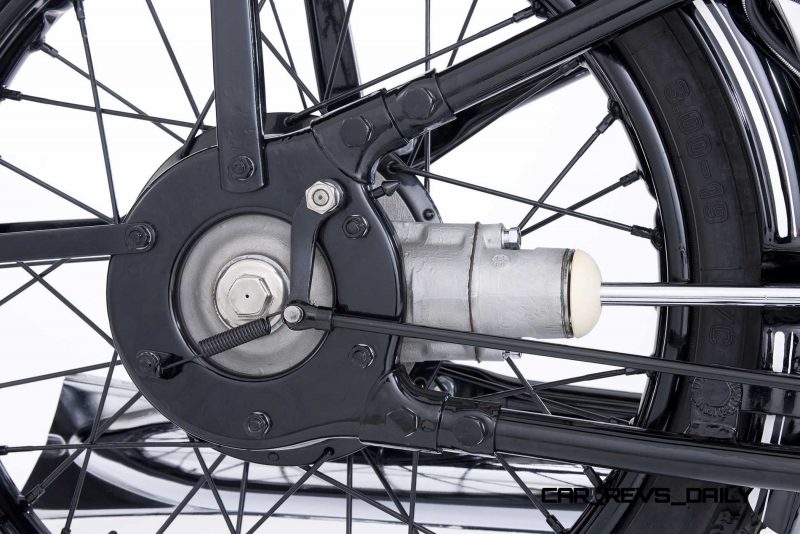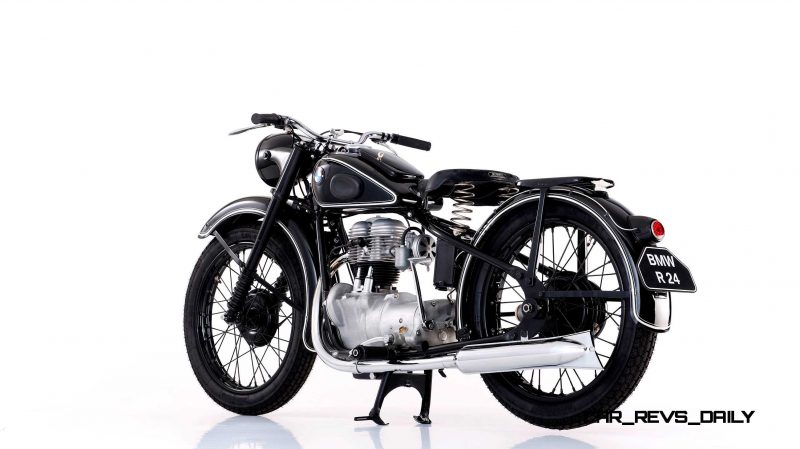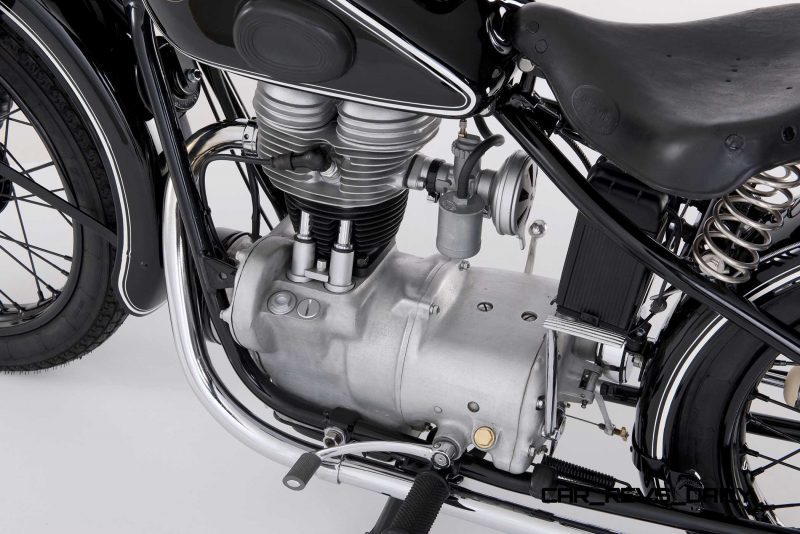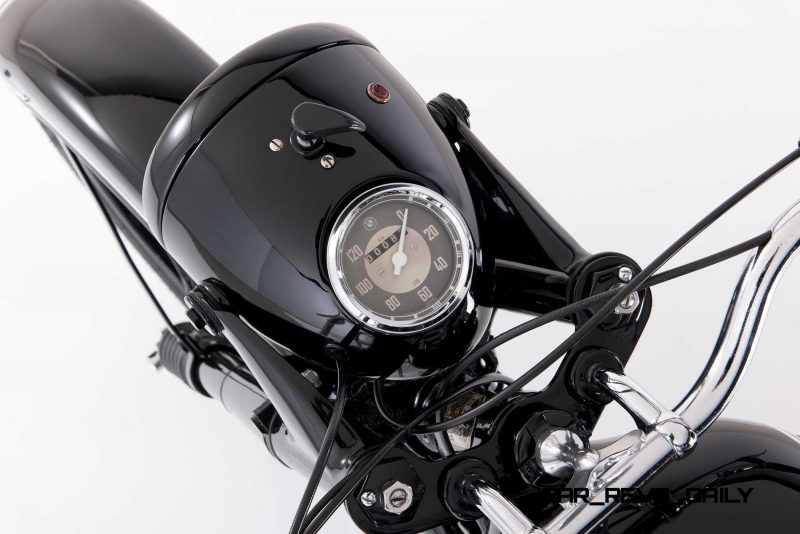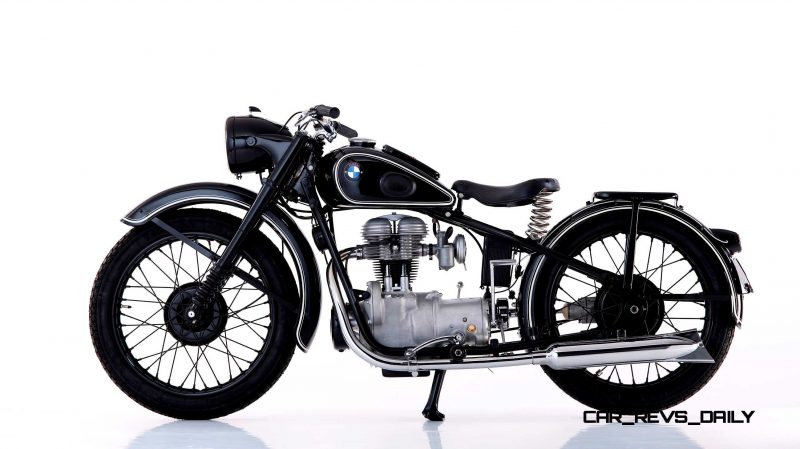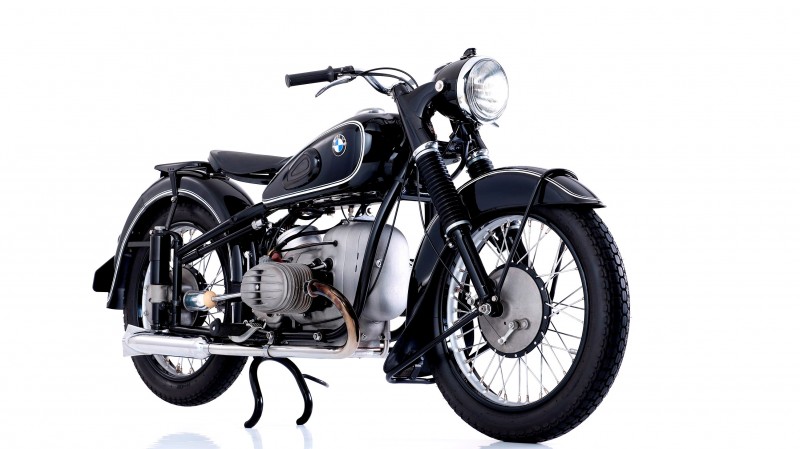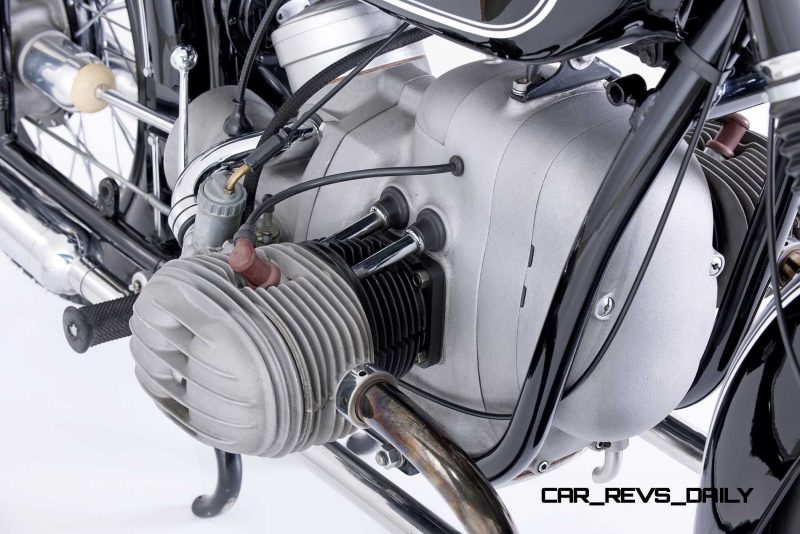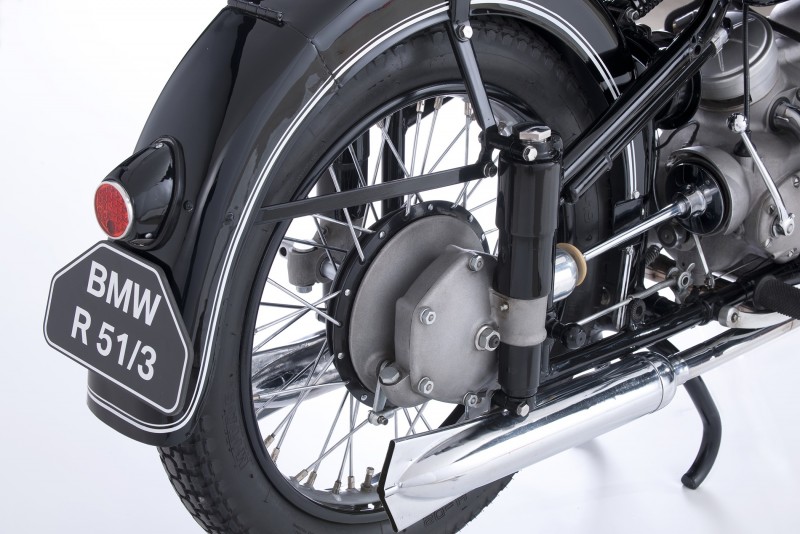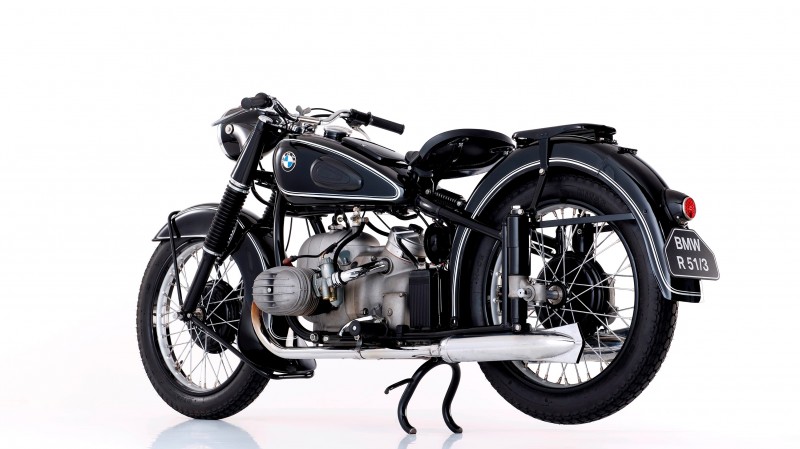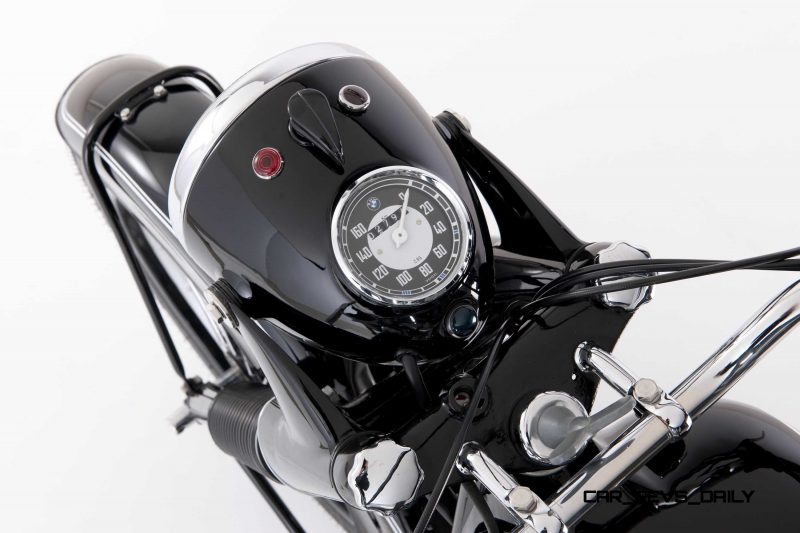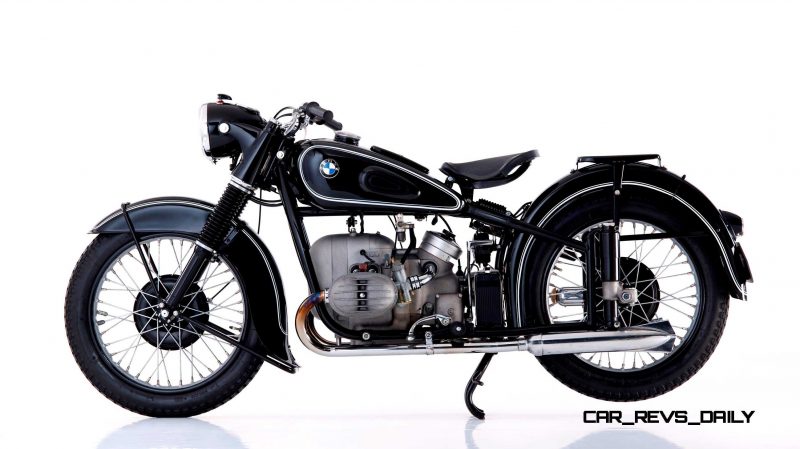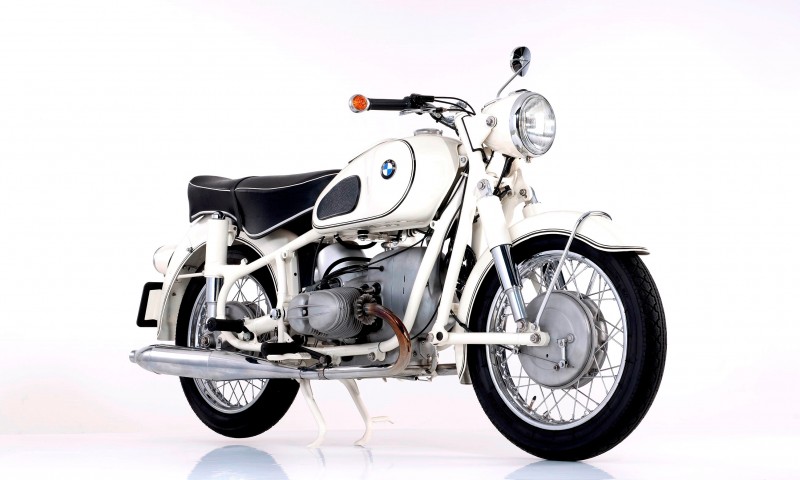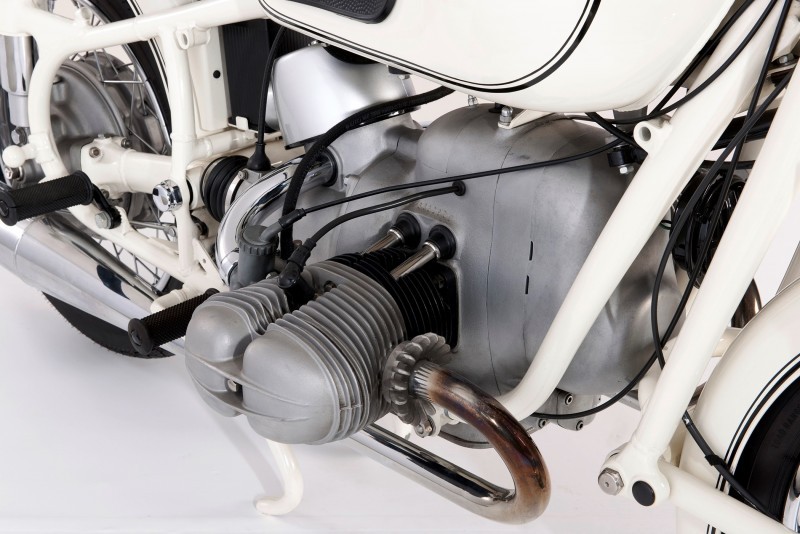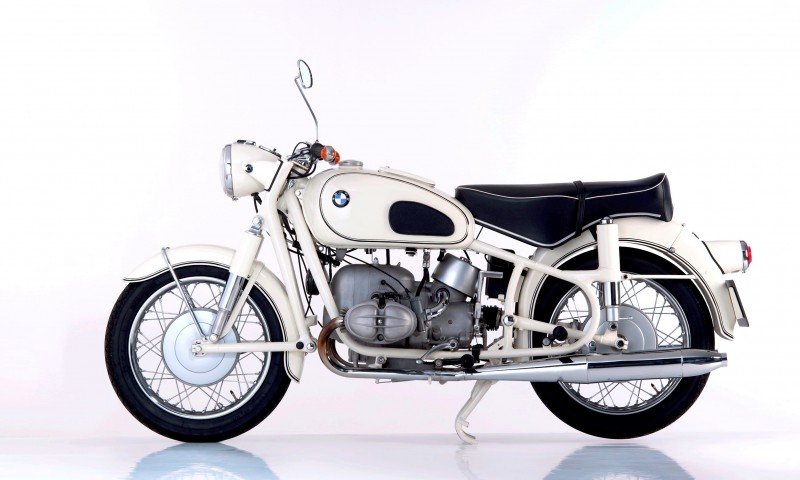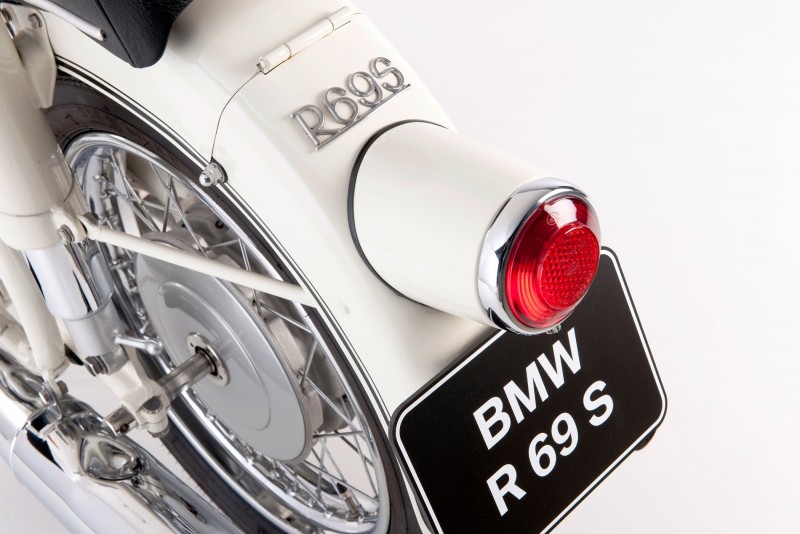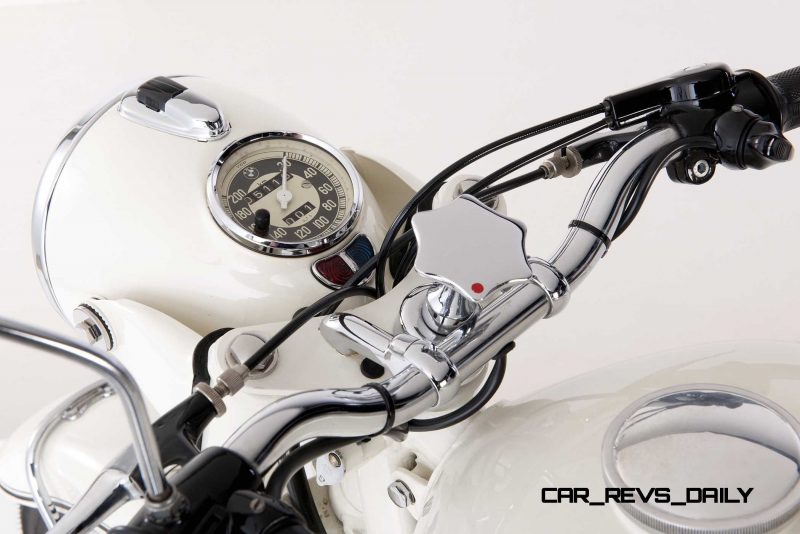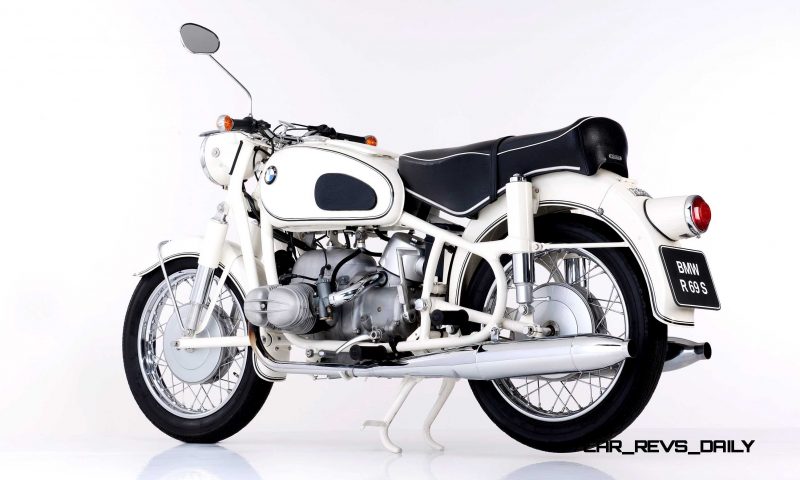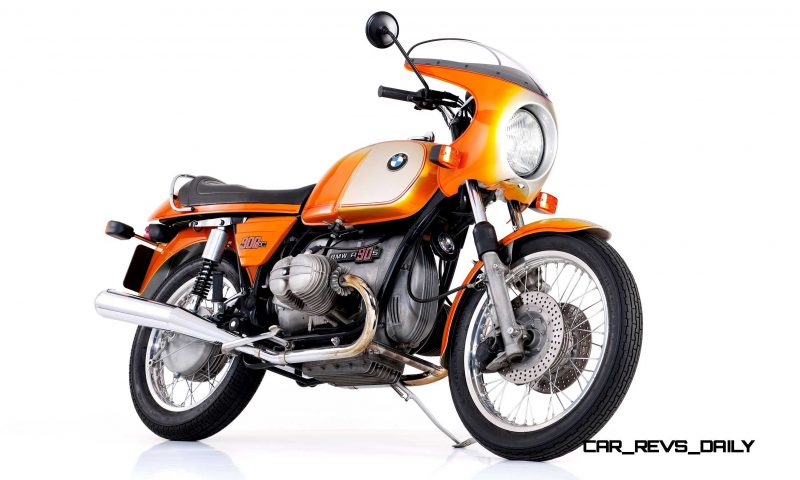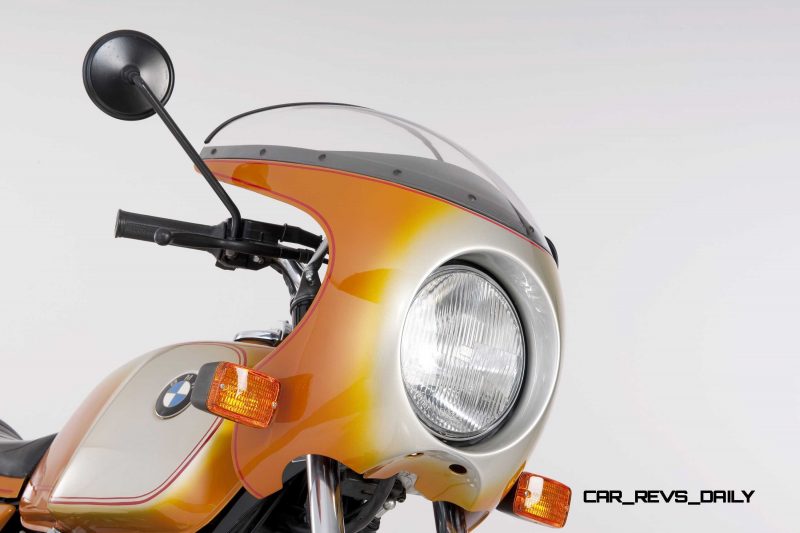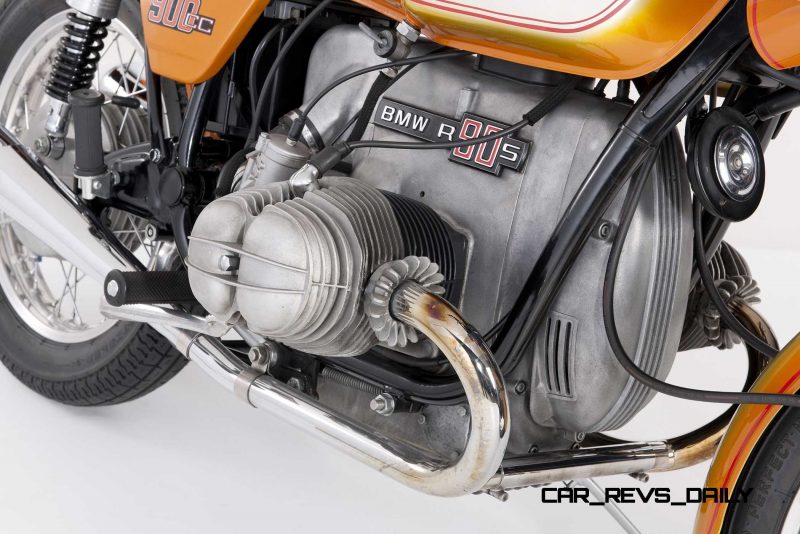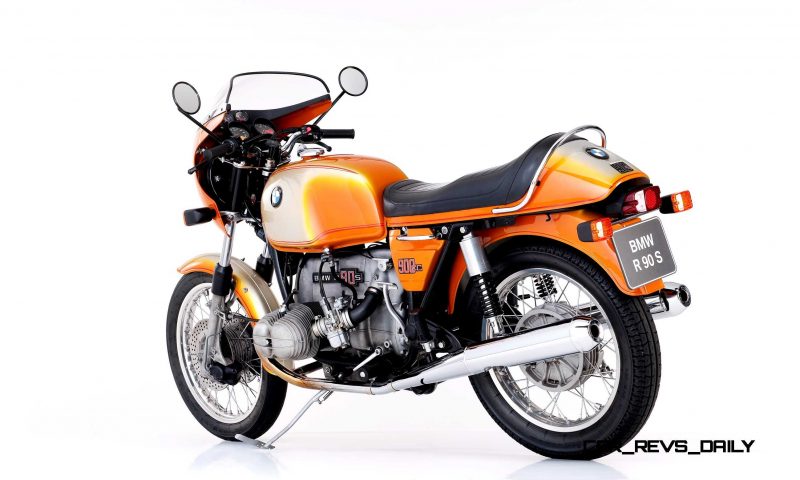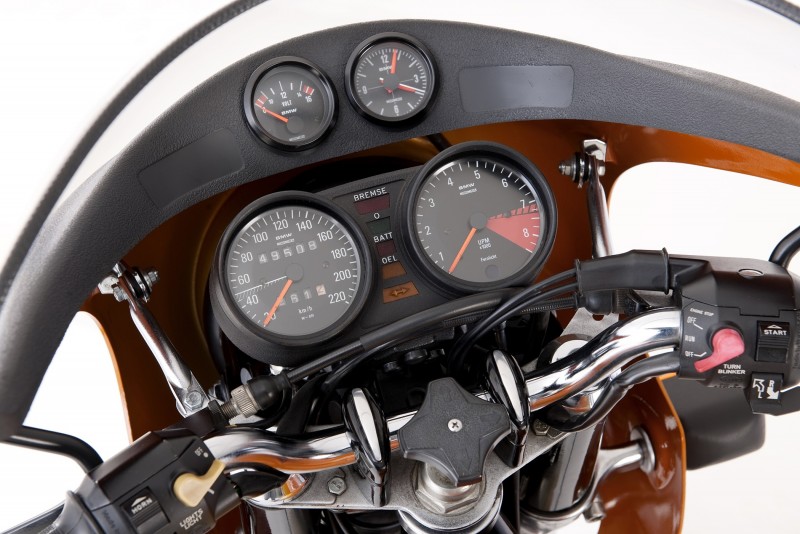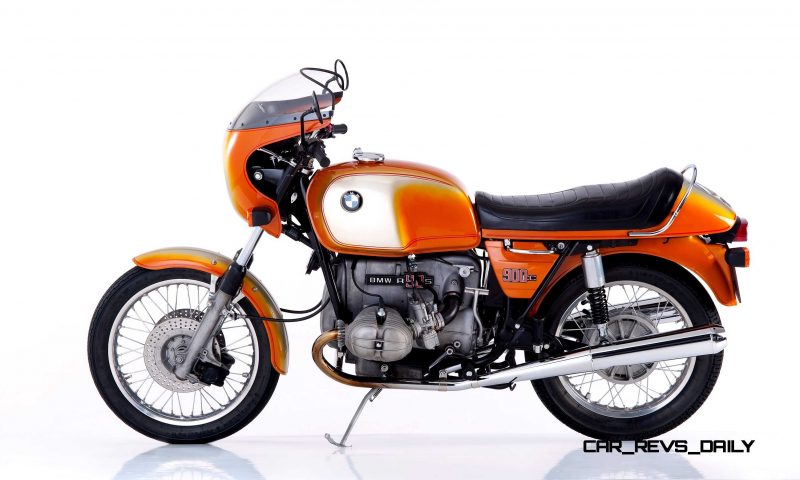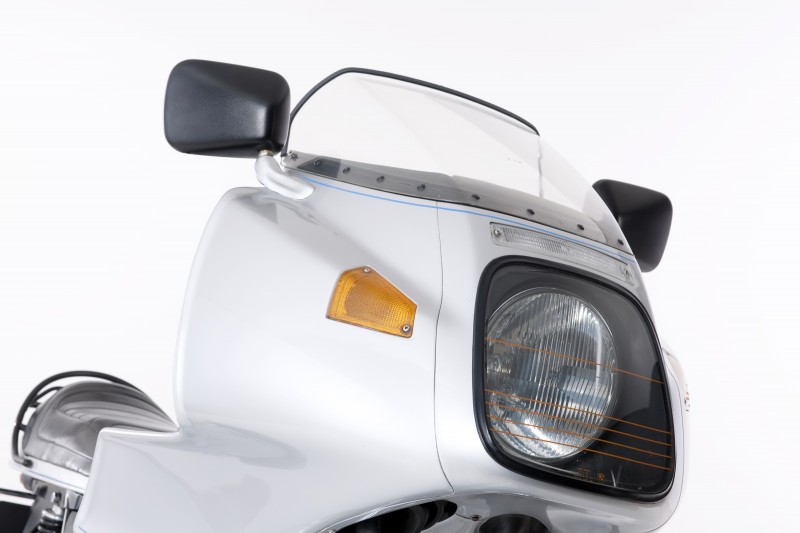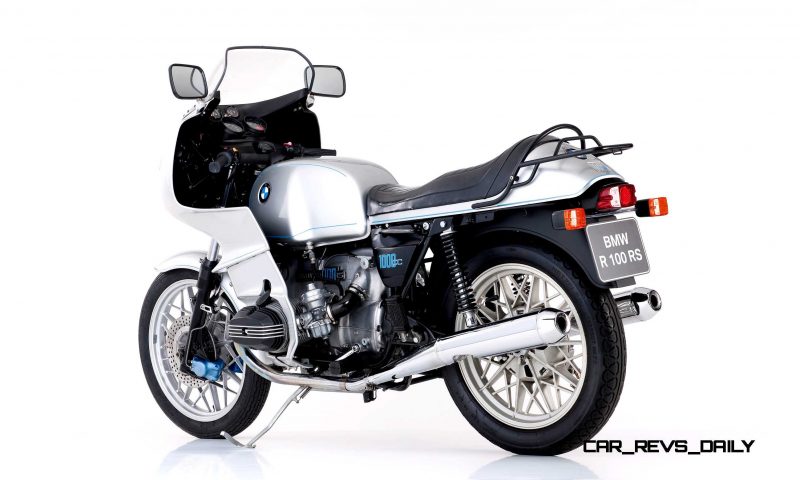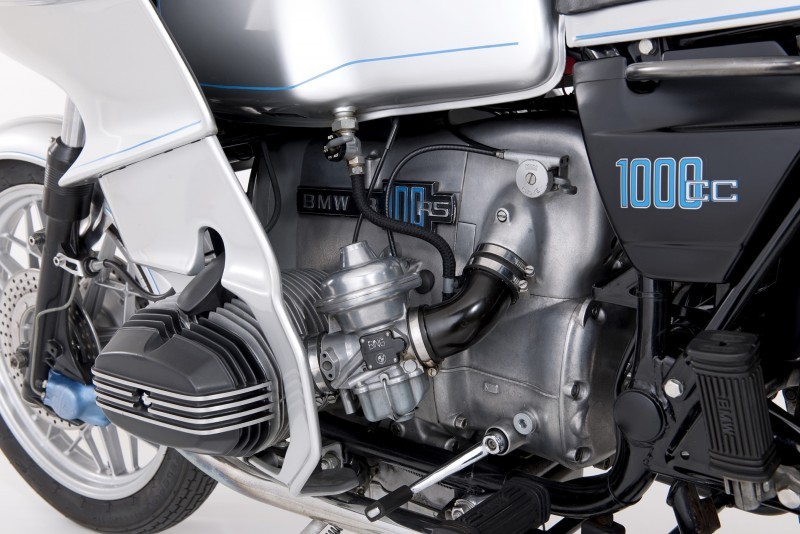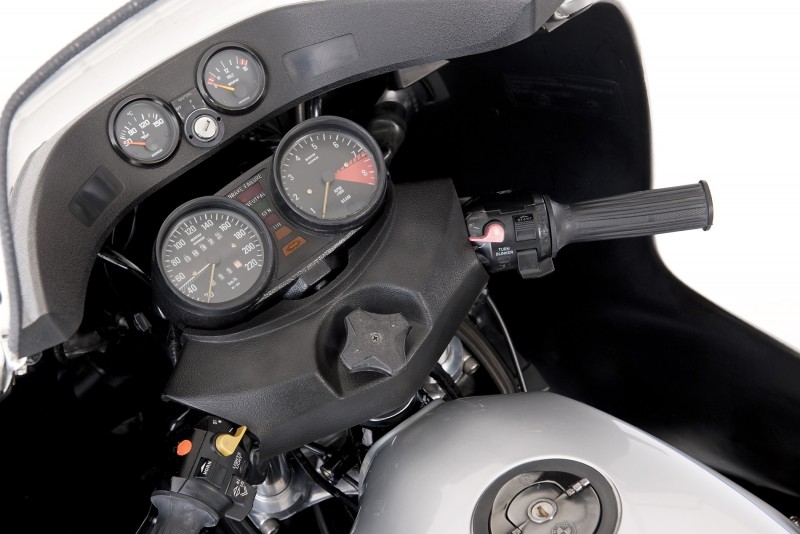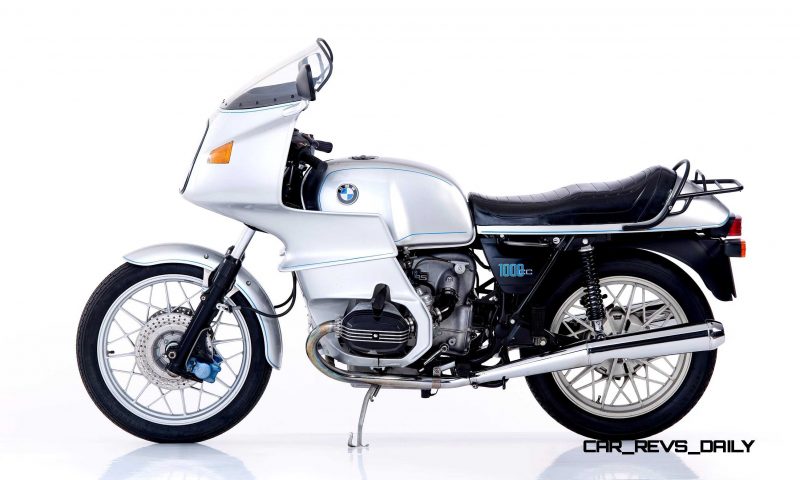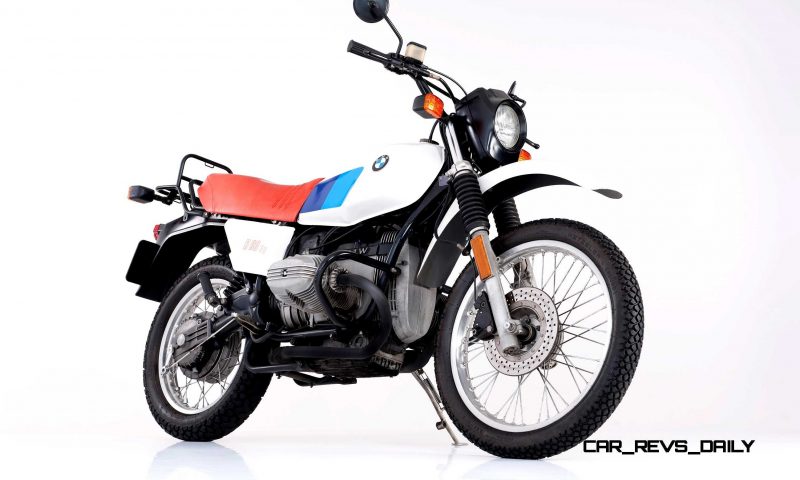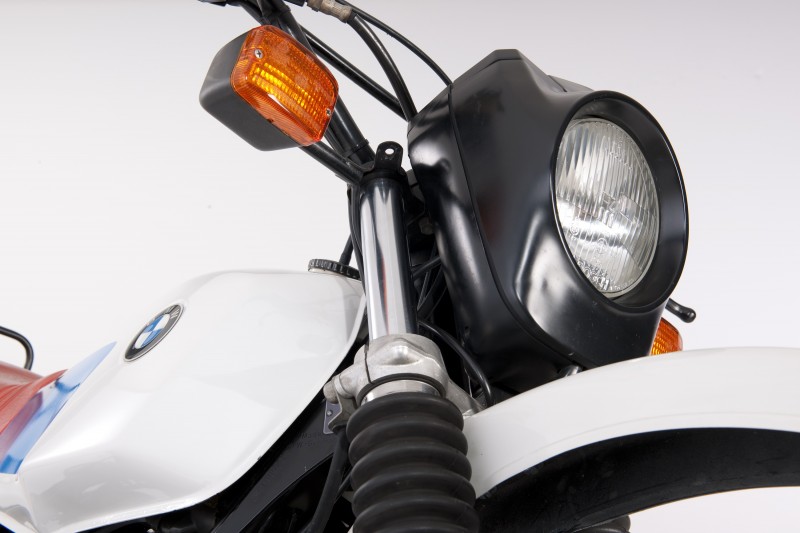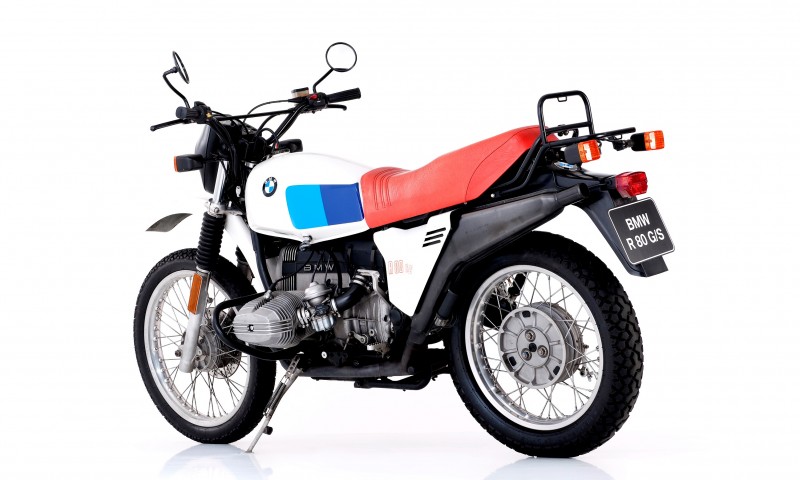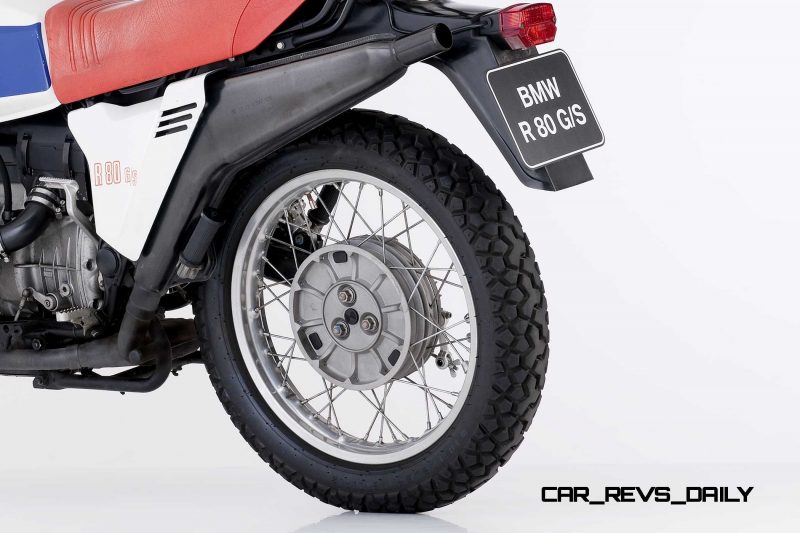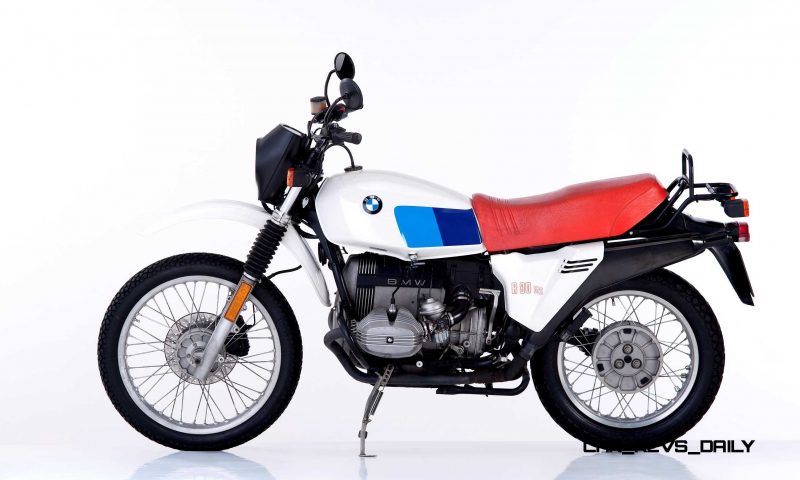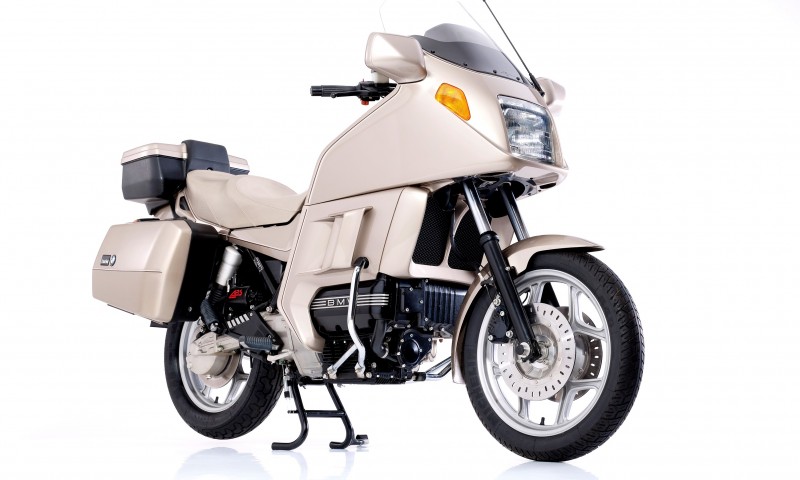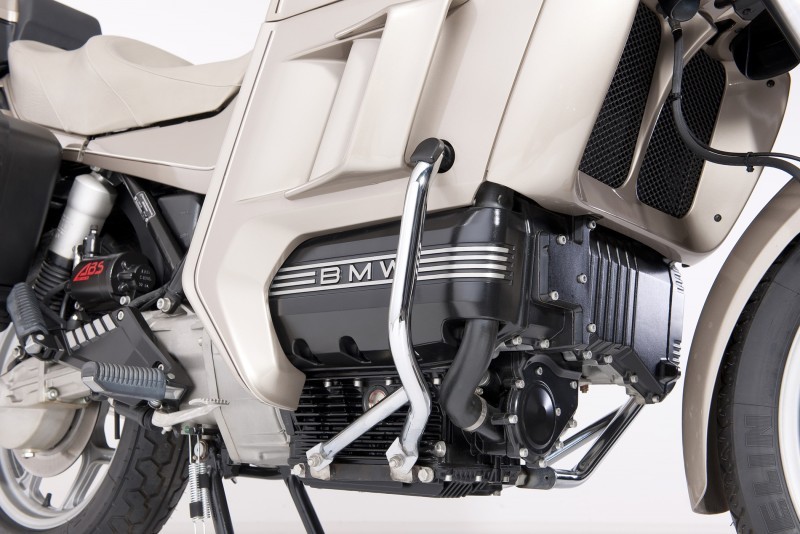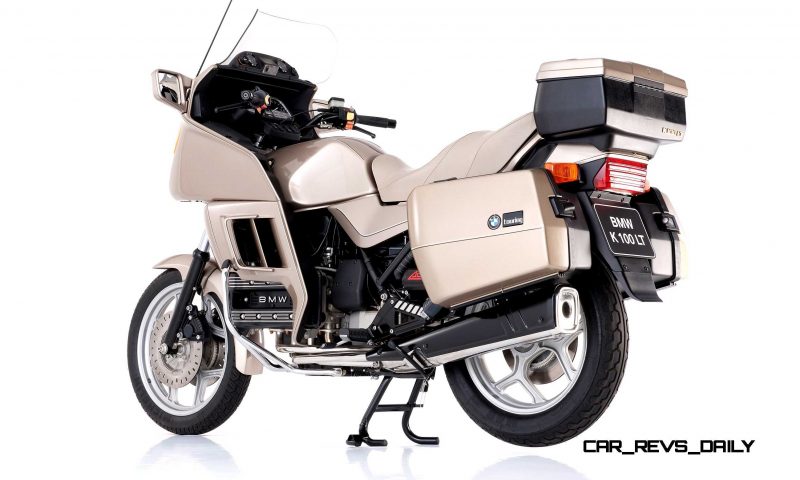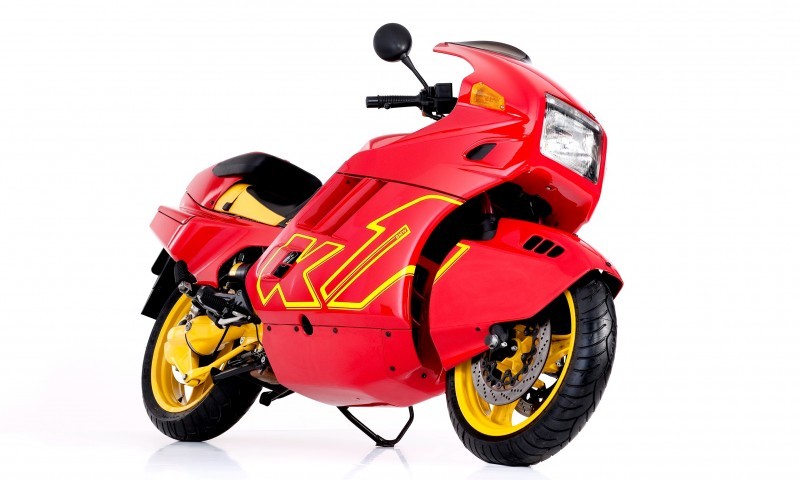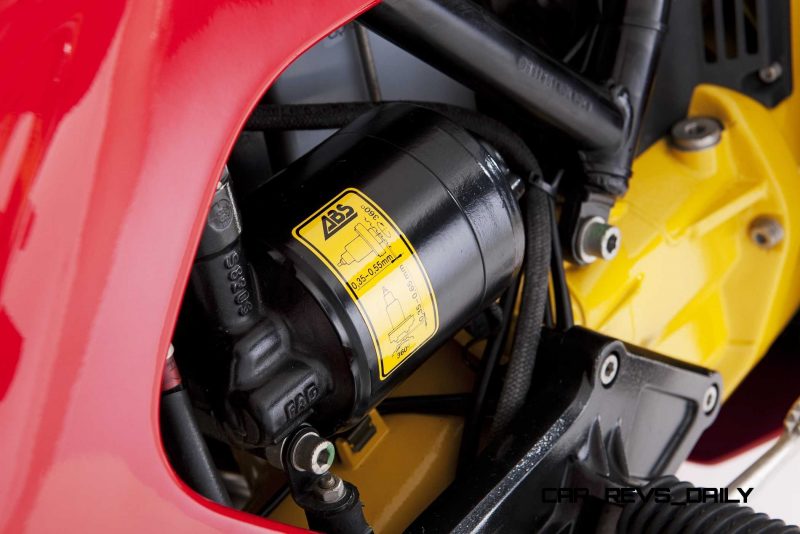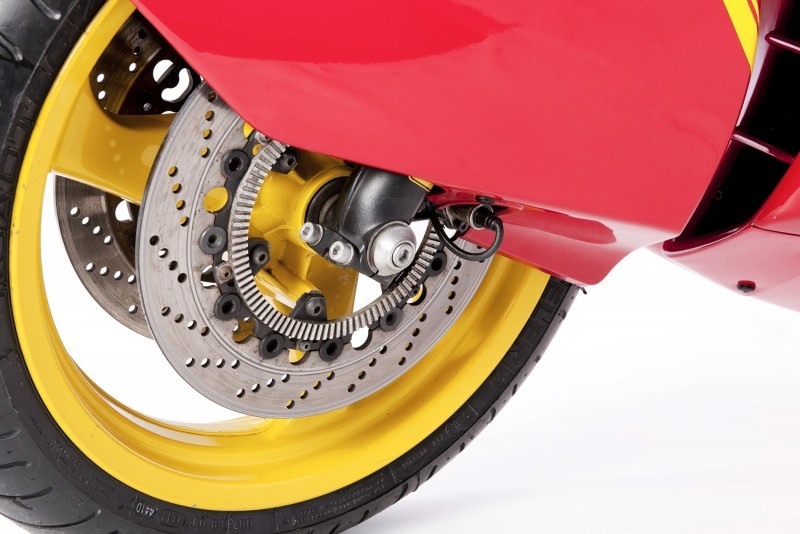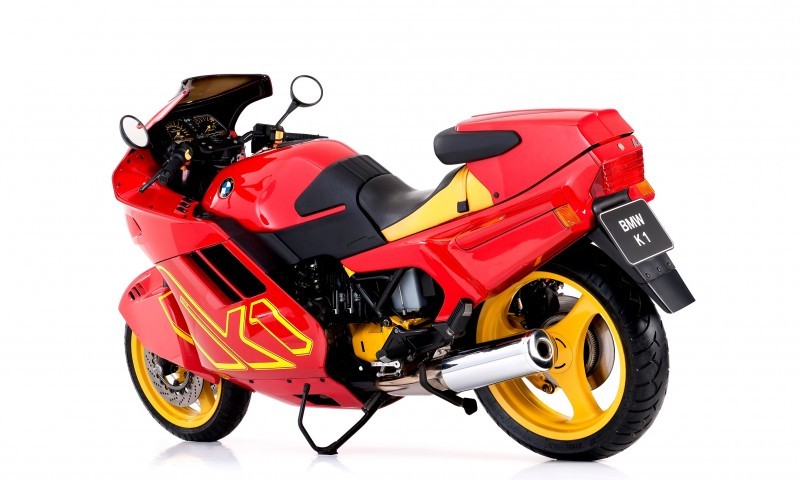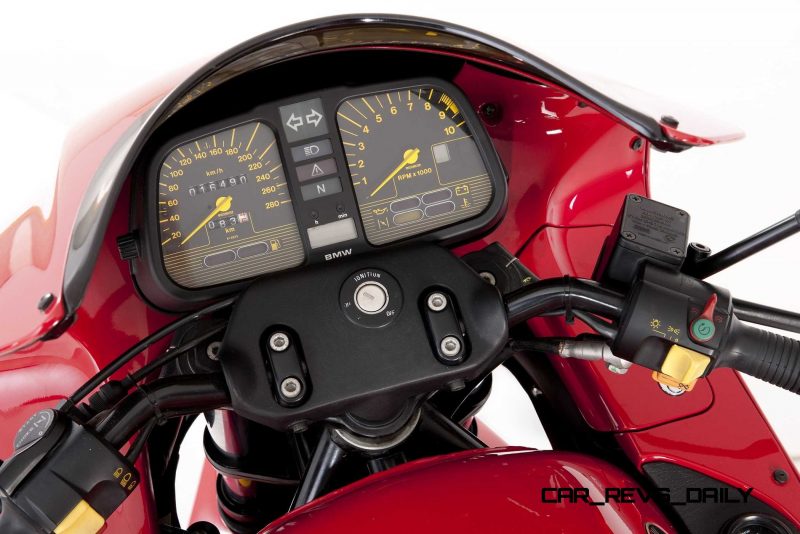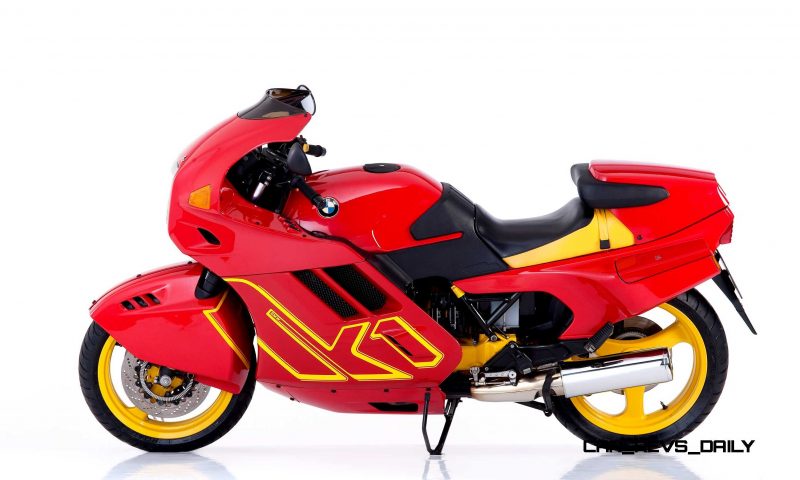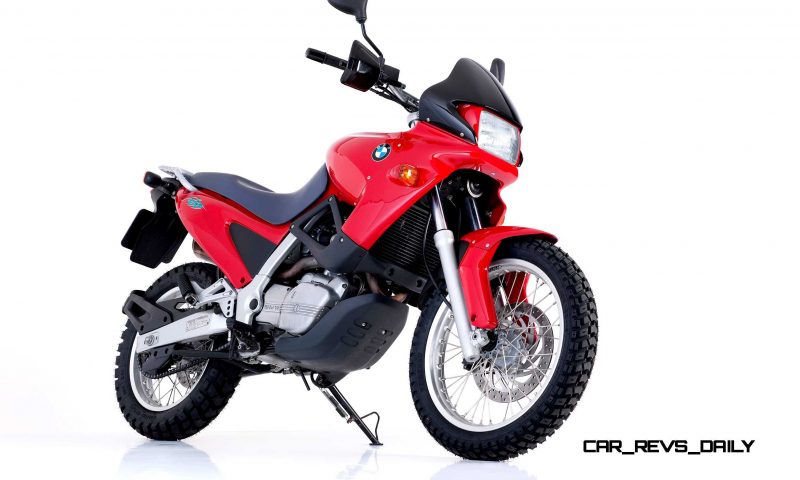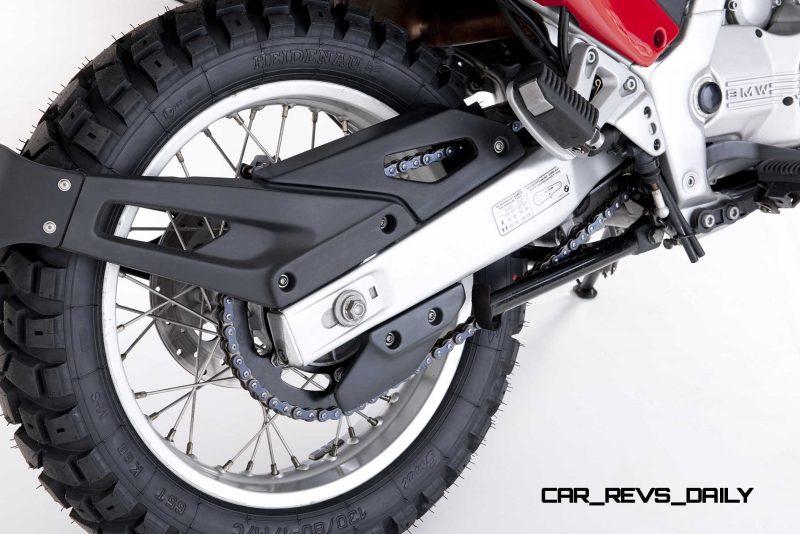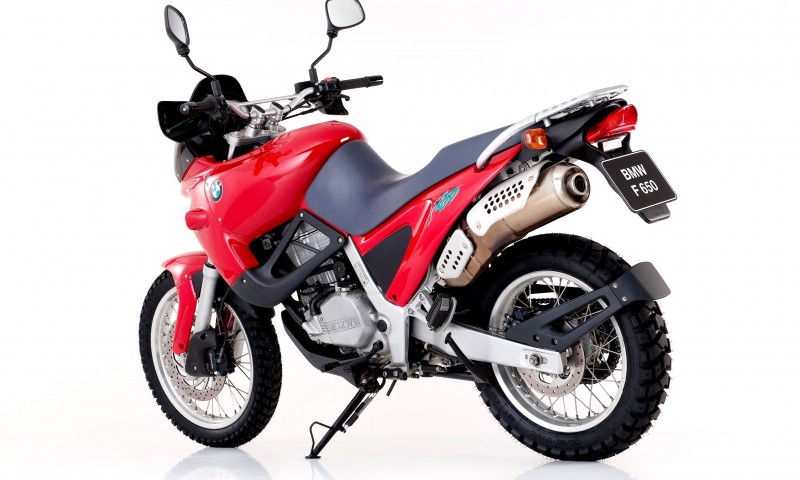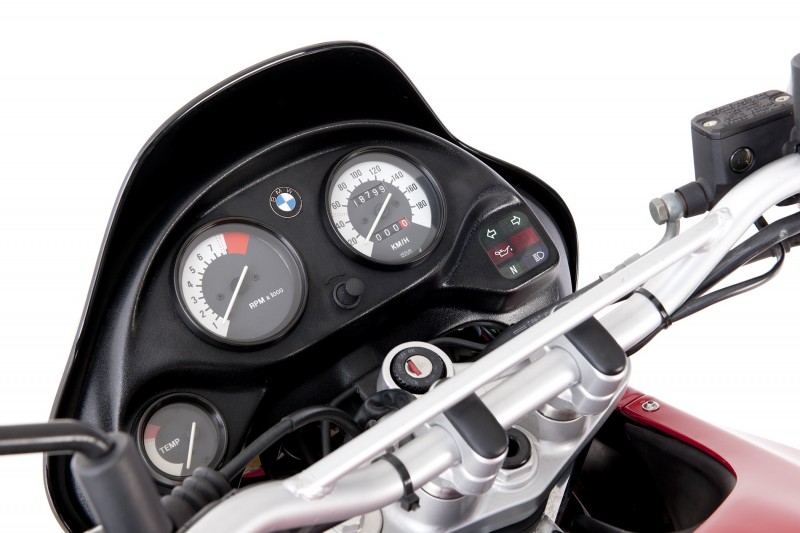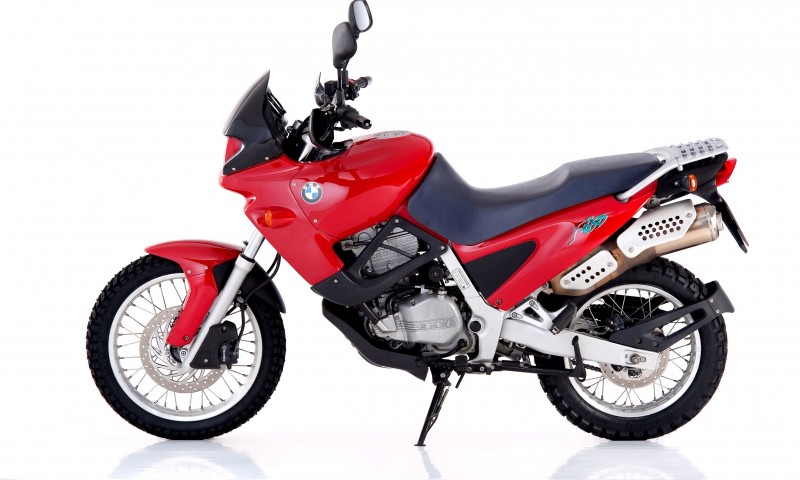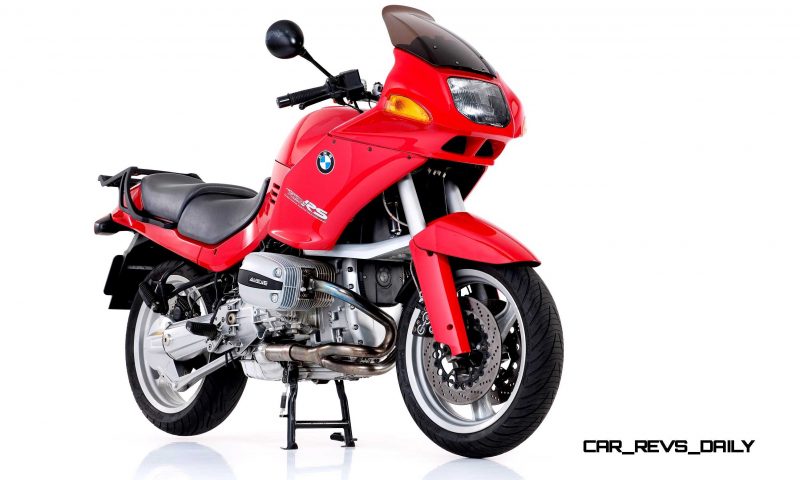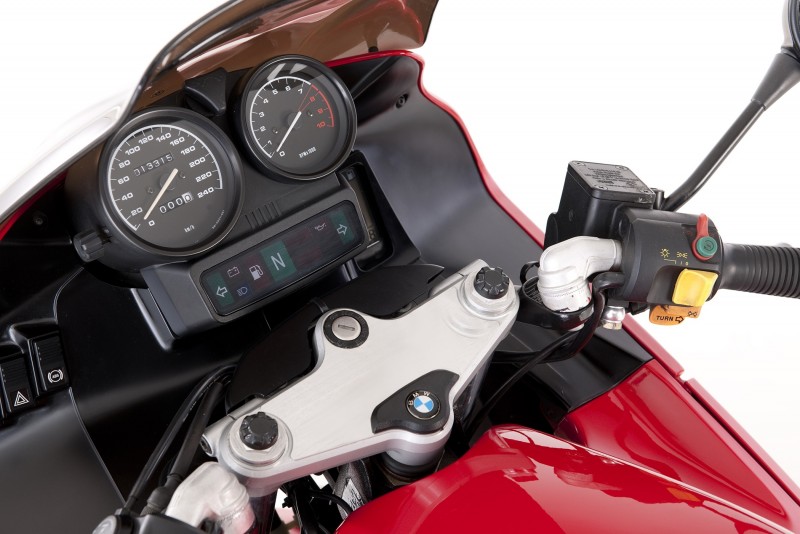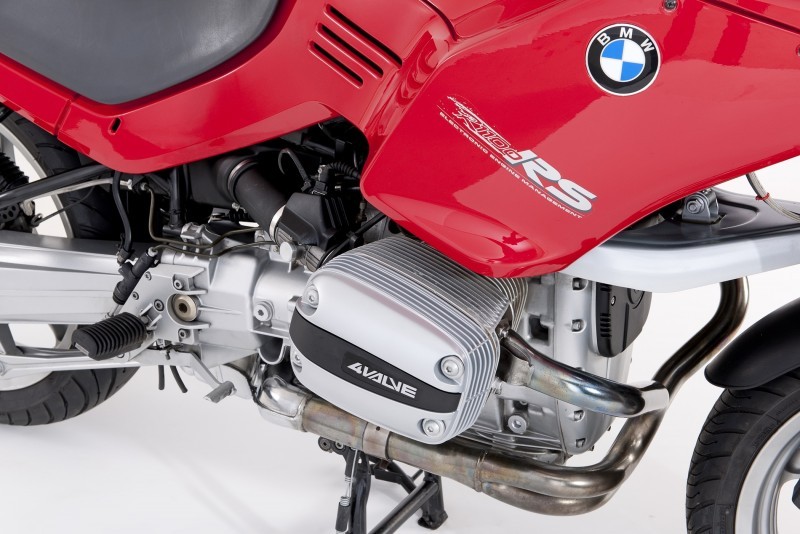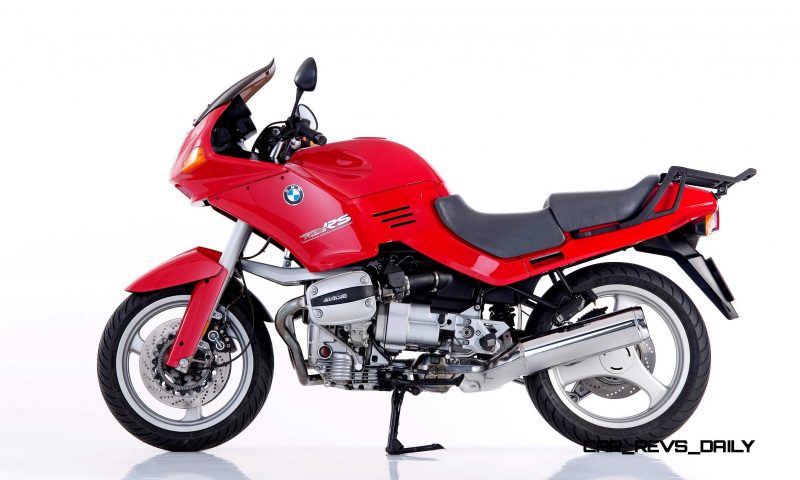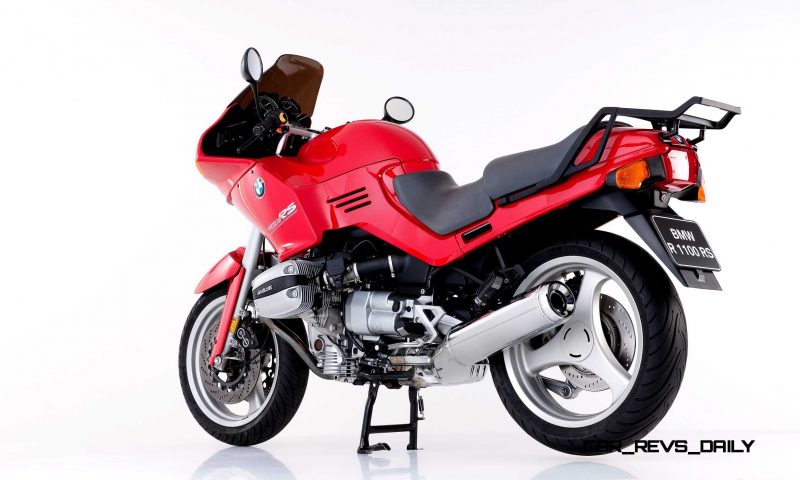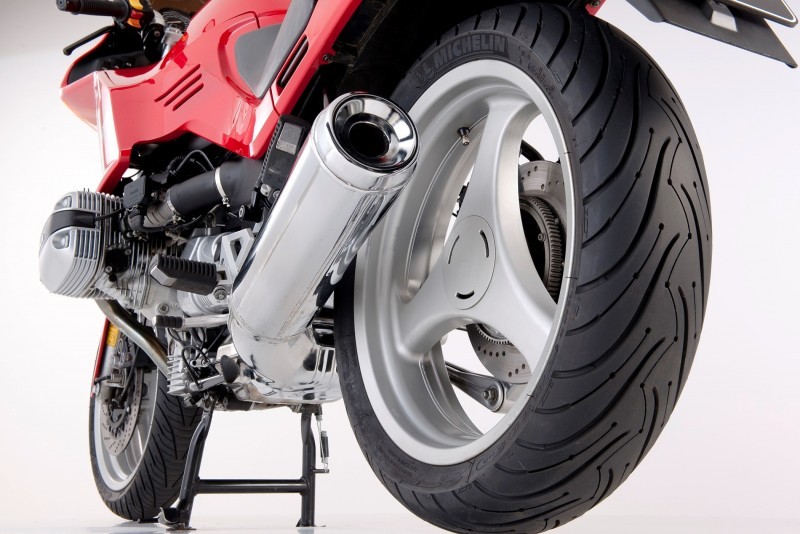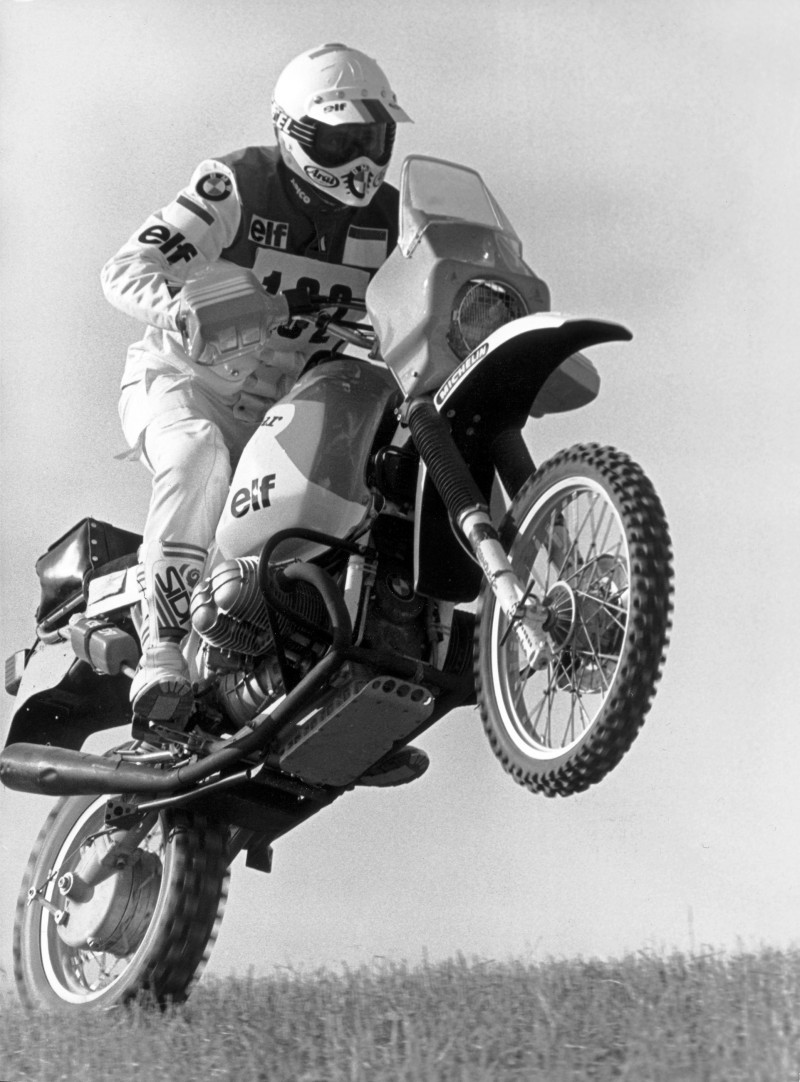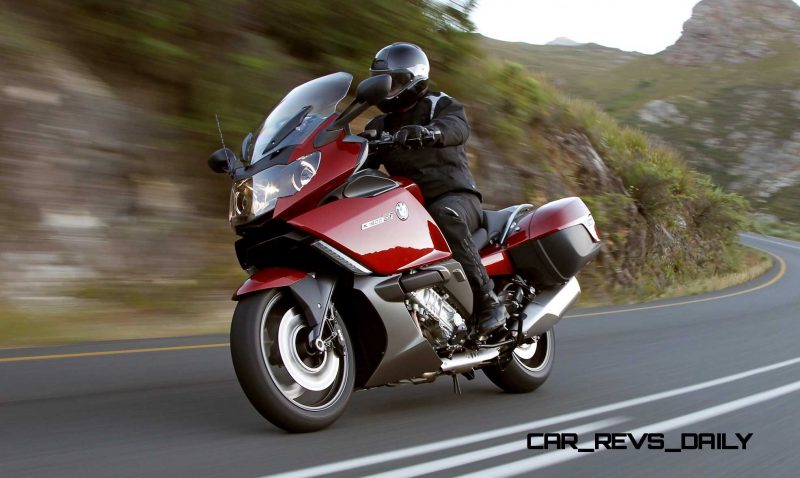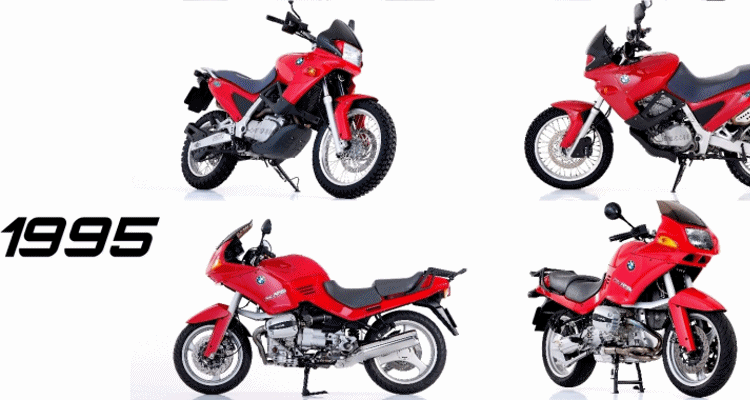The history of BMW Motorrad is actually the story of the evolution of the motorcycle in general. Giant leaps of innovation are clear to see about every dozen years, but the BMW innovation throughout keeps moving the two-wheel world forward at warp speed.
For a non-bikes guy like me and perhaps you, the names and styles are all a bit perplexing. We have labelled all the main bike photos to help make it all a bit clearer. The pre-war bikes in particular are hard to distinguish at first without the labels.
So which is your favorite? We’d pick the 1935 R12 with its densely-packed center engine compartment and streamlined, ultra-low height and narrow framework. 
1923 BMW Motorrad R 32
1923
BMW’s chief engineer Max Friz develops a boxer engine with two transverse-mounted cylinders. This principle of design proved to be an inspired response to the challenge of feeding both cylinders with an equal amount of cooling air. A feature of the brand’s first model (the BMW R 32), it became an identity-defining thread running through the history of BMW Motorrad engine technology.
1925
The aluminum cylinder head / overhead valve design – without parallel in the motorcycle world – doubles the power output of the BMW R 37. The first single-cylinder model, the BMW R 39, also features this technology.
1928
The first kick-starter crank is presented on the BMW R 57 to enable easier starting.
1929
Supercharger technology paves the way for BMW motorcycles to set their first world speed records.
1932
Twin carburetor technology is presented on the BMW R 16.
1934
The soldered tubular frame is replaced by a pressed-steel construction, which gives the BMW R 12 and BMW R 17 a heavy appearance. References to the “German school” of motorcycle design abound.








1935 BMW Motorrad R 12
1935
In the BMW R 12 and BMW R 17 the hydraulically damped telescopic fork first tested in race competition replaces the previously standard cantilever spring.
1936
Chain-driven overhead camshafts and a foot-shift four-speed gearbox are introduced for the BMW R 5.





1936 BMW Motorrad R 5
1938
The rear-wheel suspension system already employed successfully in off-road racing enters series production – and promptly takes traction and ride comfort to a new level.





1948 BMW Motorrad R 24
1950
The engine from the BMW R 5 incorporates various new features in the BMW R 51/2, such as a single oil circuit for both cylinders, slanted carburettors and finned valve covers. The BMW R 25 is given a welded tubular frame, consigning the bolted tubular frame of the first post-war models to history.





1951 BMW Motorrad R 51/3
1955
A new three-shaft transmission and a driveshaft with front universal joint take care of power transfer. The launch of the BMW R 50 and BMW R 69 brings with it the premiere of the full swing-arm suspension. The telescopic fork and straight-line suspension are replaced by an Earles-type front fork and dual rear swing arm, which take ride comfort to unprecedented levels. The driveshaft is now integrated into the swing arm.





1960 BMW Motorrad R 69 S
1960
The BMW R 69 S marks the changeover from a sprung saddle-type seat to a bench seat, which increases comfort levels significantly. The single-cylinder BMW R 27 provides far greater comfort thanks to “silent block” rubber bushes, which substantially reduce driveline vibration.





1969 BMW Motorrad R 75/5
1969
The BMW R 75/5 is equipped with constant-vacuum carburettors for improved response and refinement as well as an electric engine starter. The debut of the /5 series sees BMW introduce a completely new design for the boxer engine, which holds sway until 1993. Identifying features include camshafts and push rods located below the crankshaft and cylinders. The telescopic fork also makes a comeback in updated form. Another new feature is the double-loop tubular frame.
1973 BMW Motorrad R 90 S
1973
The BMW R 90 – the world’s first volume-produced motorcycle with a handlebar-mounted fairing – is launched. This represents a milestone in the history of aerodynamic development. Wind tunnel research is applied even more systematically in the development of the BMW R 100 RS. This model is the world’s first production motorcycle with a full fairing.
1980
The BMW R 80 G/S lays the foundations for the touring enduro segment and reveals the world’s first single swing-arm construction.
This brings the advantages of lower weight and more responsive rear suspension, and makes it easier to change the wheel.
1976 BMW Motorrad R 100 RS
1980 BMW Motorrad R 80 G/S
1983
In addition to its boxer and single-cylinder engine variants, the BMW K 100 gives a debut to a third power unit: the first in-line and first four-cylinder unit ever offered by BMW Motorrad. In another new development, the engine is longitudinally mounted. The launch of the K series models brings the introduction of the steel spaceframe, which in turn makes way for the aluminium bridge frame – but not until the 1990s.





1986 BMW Motorrad K 100 LT
1986
The BMW K 75 is fitted with a second in-line engine variant. Closely based on the four-cylinder unit, this three-cylinder engine features an innovative balancer shaft to enhance refinement.
1987
BMW Motorrad presents the Paralever construction – a newly developed double-joint swing arm that eliminates unwanted drive forces on the rear suspension.



1988 BMW Motorrad K 1
1988
Four-valve technology, DOHC cylinder heads and the world’s first digital engine electronics for motorcycles are introduced in the four-cylinder engine. BMW is the world’s first motorcycle manufacturer to offer anti-lock brakes (ABS) for its models. This braking safety technology is constantly optimised and is today fitted as standard on all BMW motorcycles.
1991
Further aerodynamic progress is made with the BMW K 1. As well as the front and rear, a section of the front wheel now also has a fairing.





1993 BMW Motorrad R 1100 RS
1993
The latest stage of boxer engine development introduces innovative details such as four-valve technology, manifold injection and a three-way catalytic converter. In a revolutionary new development for the front suspension, the Telelever construction – a combination of a telescopic fork and a wishbone – now separates the tasks of wheel location and damping.





1993 BMW Motorrad F 650
1994
The BMW R 1100 RS embodies a fundamental shift in the basic construction of a motorbike. BMW is the first volume manufacturer to do away completely with the previously standard main frame. The engine now serves as a load-bearing element.
2000
Optimised safety on two wheels is revealed in the form of the BMW C1, an urban vehicle that combines the low road-space requirements of a single-track vehicle with the safety of a small car.
2004 BMW Motorrad K 1200 S
2004
The successor to the four-cylinder engine introduced in 1988 makes its debut in the BMW K 1200 S. The new in-line unit is transversely mounted and the cylinders are inclined forwards by 55 degrees. Other highlights include new digital engine management and a dry sump lubrication system which is still unique in motorcycle design today. First the Telelever, now the Duolever. This front suspension system comprises two almost parallel wishbones, mounted in and turning within the frame. The BMW K 1200 RS is the world’s first series-produced motorcycle to feature ESA (Electronic Suspension Adjustment).
2006 BMW Motorrad F 800 S
2006
A two-cylinder unit is added to the family of in-line engines. The parallel-twin fitted in the BMW F 800 S initially uses a belt drive, but this is later replaced by chain drive.
2007
The BMW HP 2 Sport is the most powerful series-produced boxer model to date. With two overhead camshafts per cylinder, the engine generates maximum output of 98 kW/133 hp. ESA technology with extended adjustment options is now available for the BMW R 1200 GS enduro model. ASC (Automatic Stability Control) is unveiled. This system prevents the driven wheel from spinning, enabling efficient power transmission and increased active safety.
2008
The BMW K 1600 GT and BMW K 1600 GTL tourer models offer two world firsts: the multi-controller for intuitive operation of the onboard monitor and the Adaptive Headlight system. The second-generation ESA system, which adds the ability to change the rear spring rate, is presented as another world first in motorcycle design for the BMW K 1300 S.
2009 BMW Motorrad S 1000 RR
2009
The brand’s first super-sports motorcycle, the BMW S 1000 RR, is fitted with a short-stroke four-cylinder engine which develops 142 kW/193 hp, can spin to 14,200 rpm, and has titanium valves, variable intake manifolds and adjustable interference pipe valves in the exhaust system. Also new are the button-controlled Race ABS and DTC (Dynamic Traction Control) systems.

2010 BMW Motorrad K 1600 GT
2010
The slimmest and lightest in-line six-cylinder engine ever fitted in a series-produced model now powers the BMW K 1600 GT and BMW K 1600 GTL.
2012 BMW Motorrad R 1200 GS
2012
The latest generation of BMW’s boxer engine is presented – still with air/liquid cooling, but the liquid is now a glycol/water mixture which, for the first time, flows vertically through the cylinder heads. The electric motor powering the close-to-series BMW C evolution e-scooter prototype generates zero local emissions and has a range of up to 100 kilometres (62 miles). The first ever semi-active suspension system, known as BMW Dynamic ESA, is presented. The electronically controlled suspension of the BMW R 1200 GS adapts the bike’s damping automatically to the road condition and situation at hand.
The BMW R 1200 GS can also be fitted with full-LED headlights – a world first for a series-produced motorcycle. A second semi-active suspension system is developed for the BMW HP4 super-sports model based on the BMW S 1000 RR. Dynamic Damping Control (DDC) – a world first – offers the rider specific damping settings to suit various riding modes. The BMW Group uses both cars and motorcycles in real-world field trials of innovative rider assistance systems. BMW Motorrad ConnectedRide includes systems which enable vehicle-to-vehicle and vehicle-to-infrastructure communication to help avoid accidents.
2013
The BMW HP 4 is now equipped with super-exclusive Launch Control. This function helps to convert the engine’s power into forward propulsion to maximum effect when accelerating from a standing start.

Tom Burkart is the founder and managing editor of Car-Revs-Daily.com, an innovative and rapidly-expanding automotive news magazine.
He holds a Journalism JBA degree from the University of Wisconsin – Madison. Tom currently resides in Charleston, South Carolina with his two amazing dogs, Drake and Tank.
Mr. Burkart is available for all questions and concerns by email Tom(at)car-revs-daily.com.

